








elcome to the latest edition of Gazet International Global Magazine. As we navigate the ever-evolving landscape of business, finance, technology, banking and corporate world, we are pleased to present a collection of insightful articles, interviews, and analyses that shed light on the trends, challenges, and opportunities that shape today’s corporate environment. In today’s dynamic landscape, these realms are more interconnected than ever before, and the opportunities are boundless!
In this issue, I have delved deep into topics that are not only timely but also pivotal for business leaders and professionals alike. From exploring the impact of financial discipline among students to understanding the concept of diversified investments, we have curated a wealth of information to keep you informed and inspired.Discover strategies to seize opportunities, navigate volatility, and achieve your investment goals.
The business world is in a constant state of transformation, driven by factors ranging from technological innovation to global economic shifts. As such, adaptability and agility have become the watchwords of success. Our cover story, “Regtech Solutions Saving the Fintech World,” is a case study that examines how regtech is helping fintech navigate its way among the terrains of regulations and compliance requirements. Whether you’re a seasoned pro or just starting your financial journey, GI Global Magazine has got the knowledge to help you thrive.
Furthermore, in the spirit of providing actionable insights, our special article, “Paid Vacations: The Emerging Business Trend Transforming Work-Life Balance,” delves into the ways organizations are restructuring the work benefits and embracing paid vacations to boost productivity and employee satisfaction.
In our “Executive Spotlight” section, we sit down with AsiaPay Malaysia’s Country Head and Associate, Mr. Loo Tak Kheong to get his perspective on the current digital payment landscape and the operational challenges that have shaped the company. His experiences and wisdom provide valuable lessons for those aspiring to excel in their own careers.Get ready to explore the frontiers of innovation and gain a com-
petitive edge in an increasingly digital world.
We are also excited to introduce the article, “Data Analytics: An Empowering Tool for Businesses,” which will explore the latest advancements in technology and how they are influencing various industries. I am confident this article will be a gem to businessmen and investors.
As always, we value your feedback and engagement. We encourage you to share your thoughts on our articles and to connect with us on social media and through our website. Your input helps us continue to provide the content that is most relevant and beneficial to you, our discerning readers.
As we embark on this thrilling journey through the realms of commerce, finance, and technology, remember that knowledge is your ultimate asset. The world is changing at an unprecedented pace, and staying ahead of the curve is essential. We remain committed to delivering high-quality content that equips you with the knowledge and strategies needed to thrive in today’s dynamic business landscape. So, open your mind, absorb the insights, and let this issue of Gazet International Global Magazine be your trusted companion on the path to financial success.
The future is yours to shape, and together, we’ll make every page count. Happy reading!
Sincerely,
Suraksha Subba Editor-in-Chief Gazet International Global Magazine

If you are new to the world of investing, you may have heard the term “diversified investments” and wondered what it means.
assets that are not closely correlated, you can reduce the impact of market fluctuations and volatility on your overall returns.
In this article, we will explain the concept of diversification, why it is important, and how you can achieve it in your portfolio.
Diversification is the practice of spreading your money across different types of assets, such as stocks, bonds, real estate, commodities, etc.
The main goal of diversification is to reduce the risk of losing money when one or more of your investments perform poorly. By having a mix of
For example, imagine that you have invested all your money in one company’s stock. If that company goes bankrupt or faces a major scandal, you could lose all your money in a matter of days.
However, if you have invested in a variety of stocks from different industries and sectors, as well as some bonds and real estate, you are less likely to suffer a huge loss from one single event. Even if one of your investments goes down, others may go up or stay stable, balancing out your portfolio.
Diversification also helps you take advantage of

the different characteristics and performance of various asset classes over time. For instance, stocks tend to offer higher returns than bonds in the long run, but they are also more volatile and risky. Bonds tend to offer lower returns than stocks, but they are more stable and provide regular income.
Real estate can offer both capital appreciation and rental income, but it also requires more maintenance and management. Commodities can hedge against inflation and currency fluctuations, but they are also subject to supply and demand shocks.
By diversifying your investments, you can enjoy

the benefits of each asset class while minimizing their drawbacks. You can also align your portfolio with your risk tolerance, time horizon, and financial goals.
For example, if you are young and have a long time until retirement, you may want to invest more in stocks and less in bonds, as you can afford to take more risk for higher returns.
If you are older and nearing retirement, you may want to invest more in bonds and less in stocks, as you need more stability and income.
If you are looking for a way to grow your wealth and achieve your financial goals, you may want to consider investing in a diversified portfolio. A diversified portfolio is a collection of different types of assets, such as stocks, bonds, commodities, real estate, and cash, that can help you reduce your risk and increase your returns over time.
How can you achieve diversification in your portfolio? There are several ways to do so, depending on your level of knowledge, experience, and preference. One way is to use asset allocation funds or target date funds, which are mutual funds or exchange-traded funds (ETFs) that automatically adjust their mix of assets according to a predefined strategy or timeline. For example, an asset allocation fund may start with 80% stocks and 20% bonds when you are young, and gradually shift to 40% stocks and 60% bonds as you approach retirement.
A target date fund may have a specific year in its name, such as 2050 or 2060, indicating when you plan to retire. These funds are designed to simplify the process of diversification for investors who do not want to deal with the hassle of choosing and rebalancing their own assets.
Another way is to build your own diversified portfolio using individual securities or funds. This requires more research and effort on your part, but it also gives you more control and flexibility over your investments. You can choose the asset classes, sectors, regions, styles, and strategies that suit your preferences and goals.
You can also adjust your portfolio as needed based on market conditions and personal circumstances. However, you also need to be careful not to overdiversify or under-diversify your portfolio.

Over-diversification means having too many investments that are similar or redundant, which can lower your returns and increase your costs. Underdiversification means having too few investments that are exposed to high risk or low return, which can jeopardize your financial security.
To avoid these pitfalls, you need to follow some basic principles of diversification:
- Choose a reasonable number of investments that cover different asset classes, sectors, regions, styles, and strategies.
- Choose investments that have low or negative correlation with each other, meaning that they tend to move in different directions or at different magnitudes.
- Choose investments that match your risk tolerance, time horizon, and financial goals.
- Review and rebalance your portfolio periodically to maintain your desired level of diversification.
Diversified investments are an essential part of any successful investing strategy. They can help you reduce risk, enhance returns, and achieve your financial objectives. By following the tips above, you can create a diversified portfolio that works for you..

Diversification is a strategy that aims to reduce the impact of market fluctuations and unexpected events on your portfolio.
By spreading your money across various asset classes, industries, sectors, and regions, you can benefit from the different performance and behavior of each investment.
For example, when one asset class or sector is performing poorly, another may be doing well, offsetting some of the losses and smoothing out your returns.
Diversification also helps you avoid putting all your eggs in one basket.
If you invest all your money in one company, industry, or asset class, you are exposing yourself to a high level of risk. If that investment suffers a major decline or goes bankrupt, you could lose a significant portion or even all of your money. By diversifying your investments, you can reduce the chances of losing everything and protect your portfolio from extreme volatility.

There is no one-size-fits-all formula for building a diversified portfolio. The optimal mix of assets depends on your personal goals, risk tolerance, time horizon, and preferences. However, here are some general steps you can follow to create a diversified portfolio:
1. Determine your risk profile. Your risk profile is a measure of how much risk you are willing and able to take with your investments. It depends on factors such as your age, income, expenses, savings, debt, financial objectives, and personality. Generally speaking, the higher your risk tolerance, the more
aggressive your portfolio can be, meaning you can allocate more of your money to higherrisk and higher-return assets such as stocks. Conversely, the lower your risk tolerance, the more conservative your portfolio should be, meaning you should allocate more of your money to lower-risk and lower-return assets such as bonds.
2. Choose an asset allocation. Asset allocation is the process of dividing your portfolio among different asset classes according to your risk profile and expected returns. The main asset classes are stocks, bonds, commodities, real estate, and cash. Each asset class has its own
characteristics, advantages, and disadvantages. For example:

- Stocks are shares of ownership in a company that can provide capital appreciation and dividends. Stocks are generally considered the most risky but also the most rewarding asset class in the long term.
- Bonds are loans that you make to a government or a corporation that pay interest and principal at maturity. Bonds are generally considered less risky but also less rewarding than stocks in the long term.
- Commodities are physical goods such as gold, oil, wheat, or coffee that can provide protection against inflation and currency fluctuations. Commodities are generally considered volatile and unpredictable but also potentially lucrative in the short term.
- Real estate is property such as land, buildings, or homes that can provide rental income and appreciation. Real estate is generally considered illiquid and expensive but also stable and hedge
against inflation in the long term.
- Cash is money that you keep in a bank account or a money market fund that can provide liquidity and safety. Cash is generally considered the least risky but also the least rewarding asset class in the long term. The proportion of each asset class in your portfolio depends on your risk profile and expected returns. For example, if you have a high risk tolerance and a long time horizon, you may want to allocate more of your portfolio to stocks than bonds. If you have a low risk tolerance and a short time horizon, you may want to allocate more of your portfolio to bonds than stocks.
3. Diversify within each asset class. Once you have decided on your asset allocation, you should further diversify within each asset class by investing in different industries, sectors,etc.
Diversification is one of the most important concepts in investing. It means spreading your money across different types of assets, such as stocks, bonds, cash, and alternative investments, to reduce your overall risk and increase your potential returns. In this blog post, we will explain why diversification matters, and how you can diversify your portfolio in eight simple steps.



Asset classes are different types of investments that have similar characteristics and behaviours in the market. The major asset classes are:
- Equities (stocks): allow investors to have partial ownership in a company
- Fixed-income securities (bonds): securities where investors lend money to a company or a government in exchange for regular interest payments
- Cash: investments or accounts that are liquid and readily accessible (short-term certificates of deposit, money market accounts, checking and savings accounts)
- Alternative investments: investments with a generally lower correlation to the stock market (real estate, commodities, and hedge funds)
The risks and returns associated with each asset class are different. Generally speaking, stocks represent a higher risk and higher returns, while bonds offer lower risk and lower returns. Cash is the safest but also the lowest-returning asset class. Alternative investments can offer higher returns but also higher risks and lower liquidity.
The first step to diversify your portfolio is to allocate your money among different asset classes. This is called asset allocation, and it depends on your age, risk tolerance, time horizon, and financial goals.
A common rule of thumb is to subtract your age from 100 or 110 to determine the percentage of stocks in your portfolio. For example, if you are 30 years old, you could allocate 70% or 80% of your portfolio to stocks, and the rest to bonds and cash.
There are many ways to diversify your portfolio, but here are some basic strategies that you can follow:
As you get older, you should gradually reduce your exposure to stocks and increase your exposure to bonds and cash, to preserve your capital and reduce volatility. However, this rule is not set in stone, and you should adjust it according to your personal situation and preferences. For instance, if you have a high risk tolerance and a long time horizon, you could invest more in stocks than the rule suggests. Conversely, if you have a low risk tolerance and a short time horizon, you could invest less in stocks than the rule suggests.
Diversifying by asset class is not enough. You should also diversify within each asset class by investing in different sectors, industries, companies, regions, and styles.

For example, within the stock asset class, you should invest in companies of different sizes (large-cap, mid-cap, small-cap), types (growth, value), sectors (technology, healthcare, energy), and regions (domestic, international, emerging markets). Similarly, within the bond asset class, you should invest in bonds of different issuers (corporate, government), credit ratings (investment-grade, junk), maturities (short-term, long-term), and regions (domestic, international). By diversifying within each asset class, you can reduce the impact of any specific risk factor on your portfolio performance. For instance, if the technology sector declines, but the healthcare sector rises, your stock portfolio can still generate positive returns. Likewise, if the corporate bond market suffers, but the government bond market thrives, your bond portfolio can still provide income.
One of the easiest and most cost-effective ways to diversify your portfolio is to invest in an index fund. An index fund is a type of mutual fund or exchange-traded fund (ETF) that tracks the performance of a specific market index, such as the S&P 500, the Nasdaq 100, or the Nifty 50.
An index fund allows you to invest in a large number of securities that represent a broad market segment, with a single purchase. This way, you can achieve instant diversification and exposure to a wide range of companies and sectors, without having to research and select individual stocks or bonds.
Another advantage of index funds is that they have low fees and expenses, as they do not require active management or frequent trading. This means that you can keep more of your returns and avoid paying high commissions or taxes.
Fixed-income investments are securities that pay a fixed amount of interest or dividends to investors, such as bonds, preferred stocks, or dividend stocks. Fixed-income investments can provide a steady source of income and stability to your portfolio, especially in times of market volatility or uncertainty.
Fixed-income investments can also help you diversify your portfolio by adding a different type of return than stocks. While stocks offer capital appreciation (the increase in the value of the investment), fixed-income investments offer income generation (the regular payments from the investment).
However, fixed-income investments are not riskfree. They are subject to interest rate risk (the risk that the value of the investment will decline when interest rates rise), credit risk (the risk that the issuer will default on its payments), and inflation risk (the risk that the purchasing power of the investment will erode over time).
Therefore, you should carefully consider the duration, yield, and quality of the fixed-income investments you choose, and diversify them across different issuers, maturities, and regions.
Another way to diversify your portfolio is to follow a buy-hold strategy. This means that you buy quality investments and hold them for the long
term, without trying to time the market or chase short-term trends.
A buy-hold strategy can help you diversify your portfolio by reducing your trading frequency and costs, avoiding emotional decisions and behavioral biases, and benefiting from compounding returns and tax advantages.
By holding your investments for the long term, you can also reduce the impact of market fluctuations and volatility on your portfolio performance, and focus on the fundamentals and growth potential of your investments.
One of the best ways to diversify your portfolio is to keep investing over time, regardless of the market conditions. This is called dollar-cost averaging, and it means that you invest a fixed amount of money at regular intervals, such as monthly or quarterly.
Dollar-cost averaging can help you diversify your portfolio by smoothing out the effects of market movements and price fluctuations on your investments. By investing consistently over time, you can buy more shares when prices are low, and fewer shares when prices are high, resulting in a lower average cost per share.
Dollar-cost averaging can also help you avoid timing the market or making emotional decisions based on fear or greed. Instead, you can stick to your plan and goals, and take advantage of the opportunities that the market offers in the long run.
The final step to diversify your portfolio is to regularly rebalance it. This means that you adjust your portfolio allocation periodically, to bring it
back to your desired mix of asset classes and securities. Rebalancing your portfolio can help you diversify your portfolio by maintaining your risk-return profile and preventing it from drifting away from your original plan. For example, if your portfolio allocation was 70% stocks and 30% bonds at the beginning of the year, but due to market movements it became 80% stocks and 20% bonds by the end of the year, you should rebalance it by selling some stocks and buying some bonds, to restore it to 70% stocks and 30% bonds.
Rebalancing your portfolio can also help you lock in some profits and take advantage of market cycles. For instance, if one asset class performs exceptionally well compared to another, you can rebalance your portfolio by selling some of the high-performing assets and buying some of the low-performing assets, thus buying low and selling high.
In conclusion, diversification is a key principle of investing that can help you reduce your risk and increase your returns over time. By following these eight strategies, you can diversify your portfolio across different asset classes, sectors, industries, companies, regions, and styles.
Remember that diversification is not a one-time event, but an ongoing process that requires regular monitoring and adjustment. You should review your portfolio periodically and rebalance it as needed, to ensure that it reflects your goals and preferences.





Financial inclusion is not merely a buzzword but a transformative force that can change lives, communities, and entire economies. It is the idea that everyone, regardless of their economic status, should have access to affordable and reliable financial services. In this article, we’ll delve into the significance of financial inclusion, its impact on individuals and societies, and the steps being taken worldwide to make it a reality.

1. Poverty Alleviation: Access to financial services, such as savings accounts and credit, enables people to manage their finances better, save for the future, and invest in income-generating activities. This, in turn, can help lift individuals and families out of poverty.
2. Economic Growth: When a larger portion of the population has access to financial resources, it can lead to increased economic activity and entrepreneurship. More businesses can access capital to grow, creating jobs and boosting overall economic development.
3. Reducing Inequality : Financial inclusion can help bridge the wealth gap by providing marginalized and vulnerable populations, including women and rural communities, with opportunities for economic advancement.
4. Financial Stability : Widespread access to fi-

nancial services can enhance financial stability at both the individual and national levels. People can better withstand economic shocks, and governments can monitor and regulate financial systems more effectively.
Financial inclusion and the Sustainable Development Goals (SDGs) share a deeply interconnected relationship, as both are aimed at creating a more equitable and prosperous world. The SDGs, adopted by the United Nations in 2015, represent a comprehensive blueprint for global development, addressing issues such as poverty, inequality, health, education, climate change, and sustainable economic growth. Financial inclusion plays a pivotal role in advancing many of these goals. Here’s how:
1. Poverty Alleviation (SDG 1): Financial inclusion is a powerful tool for reducing poverty. When individuals and communities have access to affordable financial services like savings accounts and credit, they can better manage their finances, invest in income-generating activities, and create pathways out of poverty.
2. Hunger and Food Security (SDG 2): Financial inclusion can enable small-scale farmers to access credit for agricultural inputs, improve their farming practices, and build resilience to food security challenges. This contributes to ending hunger and achieving food security.
3. Gender Equality (SDG 5): Financial inclusion can empower women economically, bridging the gender gap in access to financial resources. When women have control over their finances, they can invest in education, health, and businesses, leading to greater gender equality.
4. Decent Work and Economic Growth (SDG 8): Expanding access to financial services promotes economic growth by fostering entrepreneurship and small and medium-sized enterprises (SMEs). These businesses generate jobs, which are essential for achieving SDG 8’s goal of decent work and economic growth.
5. Reduced Inequality (SDG 10): Financial inclusion is a key strategy for reducing economic inequality. It enables marginalized and vulnerable populations, including those in remote areas, to participate in the formal financial system, bridging wealth disparities.
6. Sustainable Cities and Communities (SDG 11): Access to financial services facilitates investment in housing and infrastructure projects, contributing to the development of sustainable, inclusive, and resilient cities and communities.

7. Climate Action (SDG 13): Financial inclusion can support climate action by providing individuals and businesses with access to funds for environmentally sustainable projects and investments in renewable energy, promoting the transition to a low-carbon economy.
8. Partnerships for the Goals (SDG 17): Achieving the SDGs requires collaboration among governments, financial institutions, NGOs, and other stakeholders. Financial inclusion promotes partnerships by bringing together diverse actors to expand access to financial services and drive development.
In essence, financial inclusion is not only a means to an end but a catalyst for achieving multiple SDGs. It empowers individuals, strengthens communities, and promotes economic growth while addressing some of the world’s most pressing challenges. As we work towards the 2030 Agenda for Sustainable Development, recognizing and fostering the symbiotic relationship between financial inclusion and the SDGs is critical to making progress towards a more just and sustainable world.
1. Lack of Access: In many rural and low-income areas, physical bank branches are scarce, making it difficult for people to open accounts or access credit.
2. Financial Literacy : Many individuals lack the knowledge and understanding needed to use financial services effectively.
3. Documentation Requirements: Some people, particularly in developing countries, lack the necessary identification documents to open bank accounts.
4. Costs and Fees: High fees associated with traditional banking services can deter individuals with limited means from participating in the formal financial system.
One of the most promising avenues for expanding financial inclusion is through digital technology. Mobile phones and the internet have revolutionized banking, making financial services accessible to even remote populations. Mobile banking apps, digital wallets, and peer-to-peer lending platforms have democratized finance, allowing people to manage their finances, make payments, and access credit using their smartphones.
Governments worldwide are recognizing the importance of financial inclusion and implementing policies to promote it. Initiatives include:
1. Branch Expansion: Governments are encouraging banks to open branches in underserved areas, reaching rural and remote communities.
2. Financial Literacy Programs: Financial education initiatives are equipping people with the skills and knowledge needed to navigate the financial landscape effectively.
3. Digital Infrastructure: Investments in digital infrastructure, such as expanding mobile networks and improving internet access, are essential for digital financial inclusion.
4. Regulatory Reforms: Governments are revising regulations to encourage competition, innovation, and responsible financial practices, making it easier for new players, including fintech firms, to enter the market.
Financial inclusion and social impact investing are two powerful forces converging to drive positive change in our global economic landscape. Financial inclusion, at its core, is about ensuring that all individuals, regardless of their socioeconomic status, have access to essential financial services. This includes banking, savings, credit, insurance, and payment systems. This access is not only a fundamental human right but also a catalyst for economic empowerment and poverty reduction.
Social impact investing, on the other hand, is a dynamic approach to investment that goes beyond mere financial returns. It seeks to generate measurable, positive social and environmental impacts alongside financial profits. Impact investors deploy their capital into businesses, projects, or organizations that aim to address pressing societal issues, such as education, healthcare, clean energy, and sustainable agriculture.
When these two concepts intersect, remarkable
transformations occur. Social impact investing leverages financial resources to support initiatives focused on financial inclusion. For example, impact investors may fund microfinance institutions that provide small loans to underserved populations, helping them start or expand businesses. These investments not only generate financial returns but also contribute to lifting people out of poverty, creating jobs, and fostering economic stability.
Moreover, social impact investing can foster innovation in financial technology (fintech), which plays a pivotal role in expanding financial inclusion. By supporting fintech startups that develop innovative payment platforms, mobile banking apps, and digital wallets, impact investors help bridge the gap between the unbanked and the formal financial sector. This not only facilitates financial access but also promotes financial literacy and inclusion, ultimately contributing to economic growth and sustainable development.
In essence, the synergy between financial inclusion and social impact investing embodies a visionary approach to addressing some of the world’s most pressing challenges. It offers a path towards a more equitable and prosperous global economy, where finance is a powerful instrument for positive social change. By aligning financial interests with social and environmental goals, we can create a world where investments do more than generate profits; they empower individuals and transform communities.
While progress has been made in the realm of financial inclusion, challenges persist. Privacy concerns, cybersecurity threats, and the risk of over indebtedness are issues that require careful consideration. However, the potential benefits of financial

inclusion are undeniable, making it a goal worth pursuing.
In conclusion, financial inclusion is not just about opening bank accounts; it’s about empowering individuals and communities to build better lives. By breaking down barriers, promoting financial literacy, and leveraging technology, we can unlock the potential of billions of people, creating a more prosperous and equitable world for all. Financial inclusion is not just an aspiration; it’s a pathway to a brighter future.


Aug 8th, 2023
Did you feel the need for a simple way to compare and order banking products, such as credit cards or loans and other types? BankyEgypt is here to help with that!
Banky is the Best Banking Comparison Site in Egypt, that helps users compare credit cards, loans, bank accounts, and savings vessels, regardless of whether you want to apply for a mortgage for that wonderful new home you’ve been looking for, or getting a car loan for that shiny new vehicle, or simply wanting to choose the best bank or product, or looking for the best daily offers in all banks, Banky is the best choice!
On the Banky website, the audiences can search among numerous possibilities that have been specially designed to satisfy their goals with precision and care, and to ensure that they obtain the best desired
results according to their needs, or more precisely, “the best choice” is our slogan. Before 2018, obtaining information about banking products and services was very difficult and required a lot of time and effort, but Banky made it easier. Banky was the only platform in Egypt through which it was possible to know, compare and order all banking products and services.
Banky has collected all the data, information and prices of all banking services and products, in addition to covering all banks indicators and banking sector news 24/7. Therefore, Banky has a competitive advantage, which is a huge database, as well as a large audience base. And, given the importance of social media, particularly Facebook, we launched Banky “Chatbot”, the virtual financial assistant, which was fed with a database, information, and prices for more than 800

programs for about 8 major products in 37 banks operating in the market, making it the largest in the Middle East to serve so far.
It has approximately 100,000 daily users and gets no less than 2 million messages per month, and it is prepared to react to any enquiries regarding all products in all Egyptian banks.
By comparing banking products on the Banky website, you can save money, time, and effort with just a few clicks! Despite this, Banky is absolutely free for users, allowing them to make informed decisions when buying banking products and Banky we strive to provide the audience with reliable, continually updated, and unbiased information to help them make the best choice. Banky is constantly developing its various products and services to serve millions.
If you hold foreign currencies and want to buy or sell it, follow the constantly changing daily rates in all banks operating in the market, especially since the liberalizing, the exchange rate that is linked to the state of supply and demand, making the decision to buy or sell dependent on the best prices. Banky provided the solution by continually updating and calculating the highest and lowest buying or selling price in the market for the most major currencies in all banks.
During the global Covid-19 pandemic, when millions of people around the world turned to technology for help, Banky played an important role in raising awareness and educating about the methods and uses of digital banking services and dealing with them safely and easily, to serve both the audience and banks, and putting forward bank tips to deal with bank branches as well as with cash.
And, because Banky values your time as much as it values your money and your efforts, if you don’t want to read, we developed my Banky newsletter, the first in the Egyptian banking sector, which keeps you up to date on the latest events and changes in the industry.
Banky was created by individuals with substantial expertise in the financial sector. Not only that, but the team includes expert researchers, allowing them to give users with the most up-to-date information.
Banky launched the first banking bulletin using AI (artificial intelligence) technologies to cover the latest and most important news in the banking arena and economic news.
Banky is considered the largest platform that attracts potential customers as it receives thousands of requests from them organically, making it a “Lead Generation” “The largest and first marketing arm of banks”.
“Banky” has the largest gathering hub of customers and bank employees in Egypt, through “Ask Banky,” a group to share all up-to-date banking news and events, for all customers and those interested in the sector, which made it the link between the public, banks and financial institutions.
Banky works to shed light on all banking systems in all parts of the world to convey the latest findings of the banking sector in terms of services, products and technological development through news and analytical coverage abroad and in the same context Banky website provides a special section in English to learn the latest developments in the local, regional and global market.
Indeed, Banky has succeeded in being a platform for achieving financial inclusion and digital transformations, one of the most important goals of the state and its strategic direction to increase dealers with the banking sector, reduces cash circulation and direct the savings of individuals under the umbrella of the banking sector “The largest tool for Banking and financial awareness and education in Egypt.”
A research centre specializing in analysis and economic studies emerged from the “Banky” site, relying on analytical methods and detailed comparisons based on ratios and evaluations to determine the best products and services in the 36 operating banks in the market. Indeed, the largest and the first series of analytical studies in the Egyptian banking sector were launched, aimed at conducting detailed comparisons of all services and products in the Egyptian banking market.
As a result of all this, Banky won about 7 prestigious international awards from major international institutions during the years 2022 and 2023. These awards came to reflect the institution’s appreciation for “Banky” innovation of a successful service model
Traders Union:
Is an informational portal offering unique content and some interesting perks for traders and investors. Established in 2010, the website has amassed a community of over 300,000 registered users. Its mission is to provide quality information, honest reviews, educational re-sources, and tools to enhance trading outcomes. The TU team comprises numerous active traders, analysts, and financial experts from around the globe.
Beginners and experienced traders have an equal need for information about financial mark-ets, including latest data on assets, companies, as well as educational articles on the basics of financial markets, strategies, etc.
TU experts analyze market events, evaluate brokerage companies, publish financial market news, and offer educational materials and trading strategy reviews. Traders Union publishes daily analytics, including re-
views and forecasts from their financial experts, focusing on key assets in Forex, stock, and cryptocurrency markets. The website also features weekly and monthly analytical reviews of financial markets, facilitating traders’ ability to stay informed, adjust their strategies, and make profitable trading decisions.
Traders can reach out to the

support service via live chat, email, or request a call back to obtain clarification or assistance regarding any questions or issues they may have.
Company ratings are another area of TU’s expertise. Traders Union publishes ratings of companies traders and investors can work with to earn money in different financial markets
and manage their equity effectively. Experienced analysts perform comprehensive analyses of numerous companies offering brokerage and payment services, cryptocurrency trading, and banking products. The ratings incorporate user feedback from the website as a mandatory assessment criterion. The website compiles ratings for Forex brokers, stockbrokers, binary brokers, and cryptocurrency exchanges. The ratings consider factors such as:

• License and regulation;
• Trading and non-trading fees;
• Deposit/withdrawal;
• Choice of trading instruments;
• Analytical materials on trading and investing;
• Passive income options, etc.
All ratings are updated monthly, allowing potential clients to access the latest information on company pros and cons, assisting them in choosing trustworthy partners.
Given the increasing popularity of digital currencies worldwide, TU provides a rating specifically for cryptocurrency exchanges. The positions in this rating are determined based on trading conditions, liquidity levels, professionalism of the support service, and traders’ reviews. Traders Union analysts utilize their own methodology, described in detail on the website, to evaluate companies. The cryptocurrency rating, like all other ratings on the Traders Union website, is regularly updated to reflect changes in trading conditions, withdrawal methods, and other relevant factors.
Traders Union offers additional benefits, including free legal support, contests for traders on demo accounts with real prize money, and a referral program. The monthly demo account contest allows novice traders to participate for free, using a virtual (demo) account to trade.
The top 10 participants share a $200 prize pool, providing an opportunity to learn and
compete with other traders while having the chance to win real money that can be withdrawn or deposited into a real trading account.
Traders Union is a trusted portal that assists traders in learning, staying informed, and achieving better trading results. The information provided by TU experts is highly regarded for its usefulness, up-to-date nature, and reliability, as confirmed by client reviews. All services on the website are entirely free for traders. To access additional benefits and cash back, traders must register on the TU website and sign up with brokers using TU’s referral links.
This September, Gazet International started their journey with podcasts. The podcast has been named “Industrial Insights Unveiled” which will be hosted by our chief editor and on each episode, we will be joined by guest speakers who are the experts in Business, Finance, Banking, Technology, Investment and related industries. On our first episode, our guest speaker was respected Mr. Loo Tak Kheong, Country Head (Malaysia) and Director of AsiaPay.
AsiaPay is a leading digital payment service provider across the Asia Pacific region. In this interview, we have unveiled insights that revolve around the operations, challenges and opportunities in the digital payment landscape.
1. Can you provide an overview about AsiaPay’s journey and its mission in the digital payment industry?
AsiaPay stands as the leading digital Payment solutions and technology vendor that has been operating across the Asia Pacific since 2000. Its company’s vision primarily relies on e-commerce businesses or rather cashless payments which includes “tap to pay” solutions to the merchants, and to banks that are in need of a trusted payment gateway that also provides alternative payment methods.
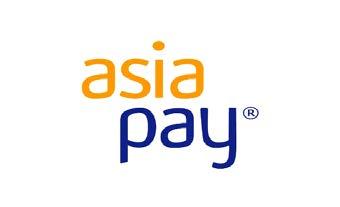
AsiaPay offers its variety of award-winning payment solutions that are multi-currency, multi-lingual, multi-card and multi-channel, along with its advanced fraud detection and management solutions. Hence, AsiaPay aims to bring fast, digital, secure and convenient cashless transactions all over the world.
2. Can you tell us about the specific roles you perform as the Country Head, Director at AsiaPay?

- Strategizing and Plan, develop, implement and execute the organization’s business direction as well as operational function to optimize performance.
- Driving profitability.
- Expanding the company.
- Managing company organizational structure, strategy.
- Communicating with partners & stakeholders.
- Mentor and interact with members of staff at all levels to foster growth and encourage development among the senior executive team and all members of staff.
3. Since the birth of AsiaPay, how has the digital payment landscape evolved? What trends do you see that can shape AsiaPay’s future?
AsiaPay believes that digitalization is key to the future of payments. We aim to impart our advanced technology and services to the businesses and promote contactless payments in other parts of Asia. Contactless payment adoption continues to climb especially during COVID to reduce risk of handling card and cash, MasterCard has witnessed a surge of 40% in contactless payments in the first quarter of 2022. In China the highest adoption rate where e-wallet purchases were 23% higher than that of cash purchases. Contactless payment technology continues to evolve to meet consumer demand and address convenience, security concerns. The trends would be:
- More adoption of biometric authentication
-“POS-less”: customer pays directly at APP without going to POS nor being a NFC transaction. Nevertheless the “tap to pay” solution also allows and caters to f2f payments for Merchants that requires it.
- Digital wallet in IOT
- Support and fuel Web 3.0 as contactless payment method as well in near future
- Non-Bank FIs plays an important part to enable / facilitate the adoption of contactless payment
Innovation and Solution
4. Can you highlight some of the innovative payment solutions that AsiaPay offers to businesses and organizations?
On the technology side and being a certified 3D-Secure vendor ACS - access control server/MPI (merchant plug-in), they offer their valued bank and payment platform clients an array of prevailing checkout platform plug-ins, customized ePayment solution platforms especially on payment gateway and anti-fraud, ACS/MPI, tokenization, DCC/MCP, eWallet, Mobile Payment & etc., as well customized integration and development services for valued merchants.
5. How does AsiaPay ensure the security and reliability of its payment processing services, especially in the face of growing cybersecurity threats?
- Reduce Fraud on Payment Transactions - AsiaPay verifies transactions with risk-based analytics to help stop fraud before it happens.
- Enhance Shopping Experience for CustomersEnhance trust and confidence for online shopping
- Increase Business Conversion Rate - Reduce shopping cart abandonment with a more secure and seamless checkout process. We have partnered with strategic partners, ie; Shopify, woocommerce, Magento, Siteminder & etc.
- Merchants Gain Business Insights - Issuers gain greater visibility into cardholder activity to help spot consumer trends. We allow issuers to monitor transactions as well.
6. Could you tell us about the challenges and opportunities that AsiaPay is presented with, as it holds a strong presence in the Asia Pacific region?
Challenges:
- Globalization, big data, mobile internet, new technology trend as the pandemic continues to accelerate global economies towards a cashless future
- From business side: Compliance/ consumer behavior/ product needs/ competition from the West / financial risks/ ROI
- From technical side: Security / regulations/ scalability / integration/ technology risks / access to expertise
- With that, at AsiaPay we have:
1. Positive/ focus/ flexibility/proactivity and organizational skills
2. Agility / vision/ trust / credibility
Opportunity :
- Following China’s lead, digital wallets are growing fast across APAC
- The rest of APAC is catching up to China’s lead in digital wallet adoption
- Emerging economies lead regional e-commerce growth India and Southeast Asia will see APAC’s strongest e-commerce growth through 2026
- Buy now pay later is seeing big gains in e-commerce (BNPL accounted for over $100 billion of APAC’s e-commerce)
- Cash continues to decline rapidly at POS The decline of cash has accelerated due in large part to the proliferation of QR codes
- Real-time payments are driving adoption of A2A in APAC account-to-account (A2A) payments and cross-border commerce is emerging as a global leader in real-time payments
- APAC consumers are a new generation of young, tech-savvy individuals who are inspiring innovative products and services. They enjoy and drive the convenience of shopping online or offline. Conversational/Chat commerce; live streaming commerce
- Cross-border e-commerce / digital n social commerce / payment
- Evolvement of Digital Banking intended to enhance banking experience of Millennial
7. How does AsiaPay personalize its services to meet the diverse needs of businesses across different countries and cultures?
To help our business partners grow their business online by providing innovative, secure and cost-effective solutions that will make them competitive in the e-commerce landscape. We encourage its merchants to bring this secure payment platform to their e-commerce stores and be able to offer premier payment methods to their users. Our other services include:
- VAS
- Anti-fraud and Security (Anti-fraud/ Customized Payment Page/ Member Payment/ Card Tokenization / VTS)
- Processing (AppPay/ PayBooth/ Payment Link/ QR Code/ Recurring Payment/ Batch Payment/ Voucher Payment/ Event Payment/ API/SDK Library)
- On-Us Processing (Instalment Payment/ Card Promotion Discount/ Loyalty Point Redemption)
- Module (Shopping Cart/ Hotel Reservation System/ Event Enrolment System)
- Big Data (Payment Analyser)
- Regional (Multi-Currency Processing /DCC & MCP/ Multi-Lever Report)
Cross Border Transaction:

8. Cross-border transactions have become essential for global businesses. How does AsiaPay facilitate seamless and secure cross-border payments?
In the e-commerce world, it is already borderless. Whereby if the merchants are able to accept cards from various payment schemes i.e.; Visa / MasterCard / unionpay / discover / diners / JCB… the merchant can accept those Payments cards across the border, globally. Hence, whether by accepting local cards or foreign cards, the same standards of
security should apply to mitigate the risk of fraud. We also have Anti-fraud and Security (Anti-fraud/ Card Tokenization / VTS / Mdes) 3ds OTP authentication – liability shift. On the technology side and being a certified 3D-Secure vendor ACS - access control server/ MPI (merchant plug-in), we offer our valued bank and payment platform clients an array of prevailing checkout platform plug-ins, customized e-Payment solution platforms especially on payment gateway and anti-fraud, ACS/MPI, tokenization, DCC/ MCP, e-Wallet, Mobile Payment & etc., as well customized integration and development services for valued merchants.
E-Commerce and Business Enablement:
9. E-Commerce has grown significantly. What are the methods that AsiaPay implements to contribute to the growth of online
businesses, especially start-ups and small enterprises?
AsiaPay assists and supports merchants in integrating the payment gateways to the acquirers. This is because AsiaPay has already integrated with multiple acquirers, not only in Malaysia but also across Asian regions which will allow the merchants to grow with us, regionally. With regards to that:
- Making a payment is an important part of the overall customer experience and you can use that process as a means to differentiate your business.
- Optimizing online payment experience to increase checkout conversion

- Optimizing local payment methods to a mobile environment
- Improving the mobile-friendliness of our site, with clear and attractive visuals, and smoother navigation. Personalizing their experience at all touchpoints such as with recommendations of solutions or products as per customers’ interests and by sending personalized messages.
- Leveraging customer data appropriately by explicit segmentation of customer profiles and standardization of the data-gathering process across all channels.
- Improving our response times for customer queries when they populate through any of the channels. Engaging and addressing all customer queries through live chat, intelligent chatbots, or interactive discussion forums.
- Providing transparency and reassurance about security
The merchants tech developers will only need to integrate with our API (application programming interface), thereafter, AsiaPay will take it from there connecting to the preferred Acquirer. It is digitally simple. For eCommerce or retail, the future is digital.
11. Could you share some examples of AsiaPay’s successful collaborations with financial institutions (FIs) and businesses, and their impact?
We add value to the FIs or Payment Partners / Schemes by addressing their pain-points, executing the technical part of things i.e., integrating to the merchants, offering multiple payment acceptance methods, dashboard reporting, operation & support & etc..
Enhancing systems for the FIs is very costly and hence, engaging a Tech partner like Asiapay will address these pain-points not only from the cost perspective but also on the technicality perspective as well..

“At Canadia Bank, we continue to leverage technology, invest in digital initiatives, and seek innovative ideas for the customers’ convenience. We are delighted and excited to collaborate with AsiaPay to strengthen the digital payment capabilities of our merchant partners. In return, it will provide more convenience to the individual customers, who are the end users, as they will be able to pay in simple, secure, and convenient manner.” he said.
David Chen, CEO of Atome, said: “Now, more than ever, consumers want flexibility, transparency and a better, more personalized shopping and payment experience. This exciting partnership with AsiaPay will support thousands of businesses across the region in enabling a superior, seamless checkout experience for consumers, both in store and online websites. This in turn will Optimize Customer conversion, increase average orders and repeat usage.”
Bradley Haines, Regional Vice President of Asia Pacific at SiteMinder, says, “Hotels today are chal-
lenged to keep up with the latest consumer demands, behaviours and expectations. Additionally, this year has given rise to booking cancellations and the need for online security like never before. Through our partnership with AsiaPay, our hotel customers can offer greater choice to their guests, so they can increase booking conversions online and save time by not having to manage payments manually onsite. By receiving payments upfront, hotels also have a greater ability to create contactless check-in experiences.”
12. The payment industry is subject to regulations. How does AsiaPay stay compliant with various regulations while operating across different jurisdictions?
We work very closely with the Central Banks i.e.; Bank Negara Malaysia and we are licensed to perform our business as a Payment Gateway provider. Hence, we are consistently being audited by the regulators to ensure that we are comply & certified with the standards of security i.e. PCIDSS (Payment Card Industry Data Security Standard).
So In terms security, We also work very closely with Visa & Mastercard to provide the tokenization services i.e.; VTS (Visa Token Service) & Mdes (Mastercard Digital Enablement Service) to ensure tighter security on the card’s PAN (primary account number) number to prevent fraudulent
13. What can be expected from AsiaPay in terms of future innovations, expansion plans, or new services?
AsiaPay will continue to support partners in growing their online business by providing innovative, secure, and cost-effective solutions to be industry and future-ready with digitalization and technological innovations taking over the economic sector of the world.
We will continually embrace change and innovate capitalizing on the technological trends and strength especially addressing the coming evolution of digital commerce, IOT, mobility, adoption of AI, payment data analytics and blockchain technologies
On top of our existing 16 country operation in Asia, we will continue to expand our footprint in the world to expand our payment solution and service coverage, and further scale out and build stronger business partnerships.
Our Innovation and adjustment strategies are:
• Open API for easy integration process
• Tokenization
• Smart POS – Tap to Pay solution
• Biometric recognition
• KYC – Merchant e-On boarding
• Authentication 3D Secure 2.0

• Crypto/ Blockchain
• Big data
• Artificial intelligence
• Chatbot
14. Can you share any customer success stories that showcase the impact of AsiaPay’s services?
Eastin Hotel Group IT manager: “Previously we were using different gateways, but then we switched to AsiaPay, AsiaPay offers multiple cards and other comprehensive payment methods with multi- lingual and multi-channel payment processing solution, besides, it has an advanced fraud detection and payment management solution. L’occitane Finance manager” Our Company has been using digital payment services since 2014, so it’s already been 9 years, using digital payment will increase our sales, customers can pay us anytime in any way, we are pleased with AsiaPay’s high-quality service, and their support team is very helpful.
15. Could you share some insights from your personal experience about working in the digital payment industry and contributing to AsiaPay’s growth?
In AsiaPay, we have a presence across the region which has enabled many payment methods to support the merchants to grow regionally. We believe in nurturing or supporting the merchants
to grow in the e-commerce space and addressing their pain-points by customizing solutions they need. Likewise, the same objectives and direction for AP to support our partner Banks in providing white-label payment gateways and enabling more e-commerce merchants for the Banks.
16. What advice do you have for businesses, especially start-ups and SMEs, looking to adopt online payment solutions and enhance their digital presence?
1) Transformation and upgrading of digital innovation changes the way we live and do business.
2) Business innovation through Digital Payments is to provide good, safe and secure customer experience.
17. AsiaPay was awarded for being the “Most Advanced Payment Service Provider -Malaysia 2023” in the annual Gazet International Award 2023. How does it feel to be recognized for your achievements in the field of ever growing digital payment landscape? What advice would you give to aspiring professionals who aim to achieve similar recognition and success in their careers or projects?
Having the privilege to receive recognition from the annual Gazet International Award is an overwhelming honour. This banking finance award category is aligned with our vision for market expansion to further deliver cross-border e-commerce convenience, not just in neighbouring regions in Asia. In this technological age, we can testify that striving for globalization, digitization and building a wide range of partnerships can lead to all kinds of business success.
It is my great privilege to receive such a prestigious award. Definitely a strong endorsement for us to recognize our efforts in supporting Malaysia’s businesses particularly in innovation. This will further boost AP’s firm commitment to support the continued demand in Malaysia.
My advice to my fellow awardees is to strive harder in this industry. With the latest acknowledgement added to our businesses’ credentials and expertise, a reliable & credible performance as well as reputation is important for each of our respective companies. As for the start-ups, for now, breaking in the market is what fuels your businesses but offering innovative technology and solutions that can serve both retailers and buyers would be more needed in the long run. In building a business, you may encounter shortcomings but having a goal-driven mindset can lead you to greater success.
So let’s embrace change and digital innovation for the future.




Regtech, a portmanteau of “regulatory technology,” is a specialized sub-sector within the fintech (financial technology) industry. In a landscape marked by an ever-expanding web of regulations and compliance requirements, regtech emerges as a crucial ally for businesses seeking to navigate this complex terrain.

It focuses on the development and deployment of innovative technological solutions to address regulatory and compliance challenges facing financial institutions and businesses.
Regtech leverages advanced technologies such as artificial intelligence (AI), machine learning, data analytics, and automation to streamline and enhance compliance processes, risk management, and reporting obligations. With its ability to pro-
vide real-time insights, automate labor-intensive tasks, and bolster cybersecurity measures, regtech is not just a compliance tool; it’s a strategic asset reshaping the way financial institutions and fintech companies operate, ensuring they not only meet regulatory standards but also thrive in a rapidly evolving industry.
Regtech solutions assist financial institutions in staying compliant with a constantly evolving and complex regulatory landscape. They automate the monitoring of regulatory changes, helping organizations adapt swiftly to new requirements. By automating repetitive and time-consuming compliance tasks, regtech reduces the margin for human error and significantly improves operational efficiency.
This leads to cost savings and enhanced accuracy in compliance efforts. Regtech tools provide advanced risk assessment and management capabilities by analyzing vast datasets in real-time. This allows organizations to identify and mitigate potential risks promptly.
Regtech platforms excel in handling large volumes of data efficiently. They enable businesses to collect, store, and analyze the data necessary for compliance and reporting purposes.

Many regtech solutions offer real-time monitoring of transactions and activities, which is crucial for detecting and preventing fraudulent or illicit activities promptly. Regtech automates the generation of compliance reports and documentation, making it easier for organizations to provide evidence of their adherence to regulatory standards. The automation and efficiency gains achieved through regtech can lead to significant cost reductions for businesses, as they require fewer resources for compliance tasks.
Regtech solutions are designed to be scalable, allowing financial institutions to adapt to changes in their size and scope of operations without major disruptions to their compliance processes. Some regtech applications enhance the customer onboarding experience by simplifying identity verification and due diligence processes, reducing friction for clients.
Regtech systems often maintain detailed audit trails, ensuring transparency and accountability in compliance efforts. In summary, regtech plays a vital role in helping financial institutions navigate the complex regulatory environment efficiently and effectively. By harnessing technology, it not only ensures compliance but also provides opportunities for improved risk management, cost savings, and enhanced customer experiences. As regulations continue to evolve, regtech will remain a critical component of the fintech landscape.
The financial sector is renowned for its intricate and multifaceted regulatory framework, a web of rules and standards designed to ensure the stability, integrity, and fairness of financial markets. These regulations serve as a protective shield for consumers, investors, and the broader economy, helping to prevent crises and fraudulent activities that can have far-reaching consequences. However, the very complexity of these regulations can often present significant challenges for businesses operating in the financial industry.
One of the defining characteristics of the financial regulatory landscape is its sheer volume. Financial institutions, ranging from banks and insurance companies to investment firms and fintech startups, must contend with an ever-expanding library of rules and guidelines issued by various regulatory bodies. These bodies can include government
agencies, central banks, international organizations, and industry-specific authorities, each with its own set of mandates and objectives.
Moreover, financial regulations are not static; they are in a perpetual state of evolution. New regulations are introduced in response to emerging risks and market developments, and existing ones are amended to reflect changing economic conditions and technological advancements. The dynamism of the regulatory environment requires financial institutions to stay vigilant, continuously monitor changes, and adapt their compliance strategies accordingly.
The global nature of finance adds another layer of complexity. Financial institutions often operate across borders, subject to the regulatory oversight of multiple jurisdictions. This means they must grapple with a patchwork of regulations that

can vary significantly from one country to another. Achieving compliance on a global scale while adhering to these diverse sets of rules can be a daunting task.


Furthermore, the interconnectivity of financial markets means that a regulatory change or incident in one part of the world can have cascading effects on a global scale. This interconnectedness underscores the importance of regulatory harmonization and international cooperation in ensuring financial stability.
The world of financial regulations is a labyrinthine landscape where rules are abundant, ever-changing, and often overlapping. Navigating this complex environment demands not only a deep understanding of the regulations but also the strategic deployment of technology and expertise to efficiently and effectively meet compliance obligations. This is precisely where regtech, or regulatory technology, emerges as a critical tool, offering innovative solutions to simplify and streamline compliance efforts in the intricate world of financial regulations.
The fintech industry has witnessed explosive growth in recent years, disrupting traditional financial services and delivering innovative solutions to consumers and businesses alike. However, as fintech companies venture into this dynamic landscape, they encounter a regulatory environment often likened to a “minefield.” The regulatory challenges they face are multifaceted and can pose significant hurdles to their growth and sustainability.
One of the foremost challenges for fintech companies is the diversity of regulatory authorities and frameworks they must contend with. Operating across borders frequently exposes them to a patchwork of regulations, both domestic and international, imposed by government agencies, central banks, and industry-specific oversight bodies. This regulatory fragmentation can result
in compliance complexities, as fintech firms must decipher and adhere to a multitude of often contradictory rules.

Moreover, the pace of technological innovation within fintech often outstrips the ability of regulators to keep up. This lag can lead to regulatory uncertainty and ambiguity, forcing fintech companies to operate in a regulatory gray area. The absence of clear and standardized guidelines can hinder product development, slow down market entry, and deter potential investors.
Additionally, fintech businesses must grapple with stringent know-your-customer (KYC) and anti-money laundering (AML) requirements, designed to prevent financial crimes. These requirements necessitate robust customer identification and due diligence processes, which can be costly
and time-consuming to implement, particularly for start-ups with limited resources.
Furthermore, data protection and privacy regulations, such as the European Union’s General Data Protection Regulation (GDPR), add an additional layer of complexity. Fintech companies must safeguard sensitive customer information while ensuring compliance with these stringent data protection requirements.
Lastly, cybersecurity considerations are paramount. As fintech firms handle sensitive financial data and transactions, they become lucrative targets for cyberattacks. Compliance with cybersecurity regulations, coupled with the proactive management of cybersecurity risks, is vital to protect both the company and its customers.
In short, fintech companies face a formidable challenge when navigating the regulatory landscape, which often resembles a complex and ever-changing minefield. Overcoming these hurdles requires a combination of regulatory expertise, robust compliance strategies, and the strategic deployment of regtech solutions. Successfully navigating the regulatory minefield allows fintech firms to thrive, delivering innovative financial solutions while maintaining the trust and security of their customers.
In the midst of the complex and ever-evolving landscape of financial regulations, a powerful ally has emerged - regtech, short for “regulatory technology.” This innovative field represents the convergence of technology and regulatory compliance, offering solutions that empower financial institutions and businesses to efficiently navigate the intricate regulatory terrain.
At its core, regtech is about harnessing the transformative potential of advanced technologies to streamline and enhance compliance processes, risk management, and reporting obligations. The rise of regtech can be attributed to several key factors:
1. Explosive Growth of Financial Regulations: As financial regulations multiply in both scope and complexity, businesses face a mounting burden in terms of compliance. Regtech steps in as a force multiplier, automating routine tasks and providing the tools needed to stay ahead of regulatory changes.
2. Data Analytics and Machine Learning: Regtech leverages the power of data analytics and machine learning algorithms to analyze vast datasets in real-time. This capability enables institutions to identify and mitigate risks swiftly, transforming compliance from a static, rule-based process into a dynamic and proactive one.
3. Efficiency and Cost Reduction: Through automation and process optimization, regtech solutions deliver substantial efficiency gains. By automating labor-intensive compliance tasks,

businesses can achieve significant cost savings while improving accuracy and reducing the risk of human error.
4. Enhanced Customer Experience: Some regtech applications enhance the customer experience by simplifying onboarding processes. By expediting identity verification and due diligence procedures, businesses can provide a more frictionless and user-friendly experience for clients.
5. Real-time Monitoring: Regtech tools offer real-time transaction monitoring, allowing businesses to identify and address suspicious activities promptly. This capability is particularly critical in combating financial crimes, such as money laundering and fraud.
6. Digital Transformation: As businesses undergo digital transformations, regtech aligns seamlessly with this trend. It provides the digital infrastructure needed to ensure compliance in an increasingly online and interconnected financial world.

Clearly, the rise of regtech represents a significant shift in the way financial institutions and businesses approach regulatory compliance. It empowers them to not only meet compliance obligations efficiently but also to extract actionable insights from regulatory data. As technology continues to evolve and regulations become more complex, regtech is poised to play an increasingly vital role in safeguarding the integrity and security of the global financial ecosystem.
Regtech’s transformative impact on regulatory compliance and risk management is underpinned by a diverse array of tools and technologies that are reshaping the financial industry’s approach to regulatory challenges. These components are the driving force behind the efficacy and efficiency of regtech solutions:
1. Artificial Intelligence (AI) and Machine Learning (ML): AI and ML algorithms are at the forefront of regtech’s capabilities. They enable the automation of complex tasks such as data analysis, anomaly detection, and predictive modeling. Through continuous learning from data, these technologies enhance the accuracy of risk assessments and compliance monitoring.
2. Big Data Analytics: Regtech leverages big data analytics to process vast volumes of structured and unstructured data, including transaction records, market data, and regulatory texts. By extracting valuable insights from this data, financial institutions gain a deeper understanding of their operations and compliance status.
3. Natural Language Processing (NLP): NLP technology allows regtech solutions to interpret and extract meaning from written and spoken language. It is particularly valuable in automating the analysis of regulatory texts, enabling faster and more comprehensive compliance assessments.
4. Blockchain and Distributed Ledger Technology (DLT): Blockchain and DLT offer transparent and immutable record-keeping, making them valuable tools for transaction verification and auditing. These technologies enhance the security and transparency of financial processes, critical in regulatory compliance.
5. Cloud Computing: The scalability and flexibility of cloud computing are instrumental in regtech solutions. It facilitates the storage and analysis of vast datasets and allows businesses to adapt quickly to changing regulatory requirements.
6. Application Programming Interfaces (APIs): APIs enable seamless integration between various systems and data sources. In the context of regtech, APIs play a pivotal role in connecting data streams, ensuring data accuracy, and facilitating the interoperability of different compliance tools.
7. Robotic Process Automation (RPA): RPA automates repetitive and rule-based tasks, reducing the burden of manual compliance processes. It enhances operational efficiency and accuracy by minimizing human intervention.
8. Regulatory Reporting Software: Specialized software solutions cater to regulatory reporting needs. These tools automate the generation and submission of regulatory reports, ensuring timely compliance with reporting obligations.
9. Biometrics and Authentication Technologies: Biometric verification methods, such as fingerprint and facial recognition, are increasingly used in regtech for identity verification and authentication, bolstering security in customer onboarding processes.

10. Cybersecurity Solutions: Given the criticality of data security in compliance, regtech encompasses a wide range of cybersecurity tools and technologies to protect sensitive financial data from breaches and cyber threats.
The synergy of these key components creates a powerful ecosystem that empowers financial institutions and businesses to navigate the regulatory landscape efficiently and effectively. As technology continues to advance, regtech will evolve further, offering innovative solutions to address emerging regulatory challenges in the ever-changing financial industry.
The rise of regtech (regulatory technology) represents a transformative force within the financial industry, offering innovative solutions that empower businesses to navigate the complex and ever-evolving landscape of regulatory compliance. Here we can explore real-world success stories of regtech adoption, shedding light on how these technologies have reshaped the way financial institutions and businesses approach regulatory challenges. Through a closer examination of key applications, we gain insights into the tangible benefits and impact regtech has had on the global financial ecosystem.
suming. However, with the advent of regtech solutions, financial institutions have experienced a paradigm shift. Companies like ComplyAdvantage have harnessed the power of AI and machine learning to analyze vast datasets in real-time, instantly flagging potential risks and compliance issues. This proactive approach has not only significantly reduced compliance costs but has also improved the accuracy of risk assessments.
One of the most prominent real-world applications of regtech is in automated compliance monitoring. Traditional methods of compliance monitoring were often labor-intensive, error-prone, and time-con-
Regtech’s impact extends to the prevention of financial crimes, such as money laundering and fraud, through real-time transaction monitoring. Companies like Chainalysis have developed sophisticated tools that track cryptocurrency transactions across blockchain networks. These tools provide insights into the origin and destination of digital assets, enabling financial institutions to identify suspicious

activities promptly. By leveraging blockchain analysis and pattern recognition, regtech has bolstered the fight against financial crimes while enhancing transparency in digital transactions.
Efficient Regulatory Reporting: Regulatory reporting is an essential but often arduous task for financial institutions. Regtech solutions such as AQMetrics have streamlined this process, automating data collection, validation, and reporting. By connecting to various data sources and utilizing cloud computing, these tools have reduced the time and effort required for regulatory reporting. This has not only improved accuracy but has also ensured timely compliance with reporting obligations, even in the face of ever-changing regulatory requirements.
In the realm of customer onboarding and identity verification, regtech has significantly enhanced efficiency and security. Companies like Jumio have leveraged biometrics and artificial intelligence to offer seamless and secure customer authentication solutions. Through facial recognition and document verification, they ensure that customers are who they claim to be, combating identity theft and fraud. These solutions have not only expedited onboarding processes but have also enhanced the customer experience by reducing friction and ensuring data security.
Data Privacy and GDPR Compliance: Regtech plays a pivotal role in assisting businesses with data privacy and compliance with regulations like the European Union’s General Data Protection Regulation (GDPR). Tools like OneTrust offer comprehensive platforms for managing data privacy and consent. By automating data inventory, consent management, and compliance assessments, these solutions ensure that organizations adhere to stringent data protection requirements. This is particularly critical in an era of increasing data breaches
and privacy concerns, where non-compliance can lead to severe financial penalties.
The real-world success stories of regtech adoption vividly illustrate the transformative power of these technologies in the financial industry. By automating compliance monitoring, enhancing transaction transparency, streamlining regulatory reporting, improving identity verification, and bolstering data privacy, regtech has become an indispensable asset for businesses navigating the regulatory landscape. These success stories underscore the tangible benefits of regtech adoption, including cost savings, enhanced accuracy, improved customer experiences, and, most importantly, strengthened regulatory compliance. As financial regulations continue to evolve, the innovative applications of regtech will continue to shape the future of the global financial ecosystem, ensuring a secure, efficient, and compliant industry.
Through the adoption of regtech solutions within the fintech ecosystem financial institutions and businesses can enhance their overall operational efficiency, reduce costs, and optimize processes. Regtech solutions automate many of the manual and repetitive tasks associated with regulatory compliance. For example, they can automatically collect and verify customer data, generate compliance reports, or monitor transactions for suspicious activities. This automation reduces the need for human intervention, minimizing errors, and saving time and labor costs. Regtech tools often introduce standardized workflows for compliance processes. These workflows ensure that tasks are carried out consistently and
efficiently across the organization. By streamlining workflows, businesses can avoid bottlenecks, reduce delays, and improve the overall speed of compliance-related operations.
Regtech solutions provide real-time monitoring capabilities, allowing financial institutions to continuously track transactions and activities. This immediate oversight enables the swift identification and resolution of compliance issues, reducing the potential financial impact of violations and penalties. Regtech utilizes advanced data analytics to process large volumes of data quickly. By analyzing this data, businesses gain valuable insights into their operations and compliance status. These insights can inform strategic decision-making, help optimize resource allocation, and identify areas for improvement.
Efficient compliance practices enabled by regtech solutions often result in cost savings. Organizations can reduce labor costs associated with manual compliance tasks, minimize fines and penalties resulting from non-compliance, and decrease the need for extensive paperwork and documentation. Regtech’s real-time monitoring and data analysis capabilities enhance risk management. By identifying compliance risks promptly, organizations can take proactive measures to mitigate them. This leads to lower potential financial losses resulting from compliance breaches or regulatory fines.
In the dynamic landscape of financial technology (FinTech), the role of regulatory technology (RegTech) in optimizing client onboarding processes cannot be overstated. FinTech firms are at the forefront of leveraging innovative technologies to deliver efficient, seamless, and compliant customer experiences, and RegTech plays a pivotal
role in this endeavor. By harnessing advanced data analytics, artificial intelligence, and machine learning, RegTech solutions empower FinTech companies to streamline onboarding procedures while ensuring strict adherence to regulatory requirements. This transformative impact is twofold: first, it accelerates the onboarding process, reducing time-to-market for new clients and enhancing their overall experience; and second, it mitigates compliance risks, safeguarding both the institution and the client. Consequently, the synergy between RegTech and FinTech not only fosters a more agile and competitive industry but also fortifies the trust and confidence of clients as they embark on their financial journey within the digital realm. As regulatory complexity continues to evolve, the symbiotic relationship between RegTech and FinTech becomes increasingly pivotal in shaping the future of financial services, offering clients a smoother, more secure, and efficient onboarding experience.

The future of regulatory technology (RegTech) within the financial technology (FinTech) sector holds significant promise and is poised to undergo transformative developments. Several trends are expected to shape the landscape of RegTech in FinTech in the coming years.

1. Enhanced AI and Machine Learning Integration: The integration of artificial intelligence (AI) and machine learning (ML) is set to deepen within RegTech solutions. These technologies will play a pivotal role in automating complex compliance tasks, such as transaction monitoring, risk assessment, and fraud detection. As AI algorithms become more sophisticated, they will provide FinTech firms with actionable insights, reducing false positives and enhancing overall regulatory efficiency.
2. Cross-Border Regulatory Solutions: FinTech companies often operate in a globalized environment, requiring them to comply with a myriad of
regulations across different jurisdictions. RegTech solutions are poised to offer more comprehensive cross-border compliance capabilities, ensuring that companies can navigate the complexities of international regulations seamlessly.
3. Blockchain and Distributed Ledger Technology (DLT): The transparent and immutable nature of blockchain and DLT presents an opportunity to streamline regulatory reporting and data management. RegTech firms will explore these technologies to enhance data integrity and security while simplifying audit trails and compliance verification.
4. Cybersecurity and Data Privacy: As data breaches become increasingly prevalent, RegTech will place a greater emphasis on cybersecurity and data privacy. Solutions will be designed to not only ensure compliance with data protection regulations but also to proactively identify and mitigate emerging cybersecurity threats, safeguarding both financial institutions and their clients.
5. Regulatory Sandboxes: Regulatory authorities in various countries are creating sandboxes to encourage innovation in the financial sector while maintaining regulatory oversight. RegTech startups will have the opportunity to test and refine their solutions within these controlled environments, fostering innovation and allowing regulators to better understand and adapt to emerging technologies.
6. Ethical and Responsible AI: As AI becomes more prevalent in regulatory processes, there will be a growing emphasis on ensuring that these technologies are used ethically and responsibly. RegTech firms will need to incorporate principles of fairness, transparency, and accountability into their AI-driven solutions to address regulatory and societal concerns.
7. Partnerships and Ecosystems: FinTech companies will increasingly collaborate with RegTech providers and other stakeholders to create integrated ecosystems for compliance and risk management. This collaborative approach will enable more holistic and efficient solutions, reducing the fragmentation of compliance processes.

In summary, the future of RegTech in FinTech is marked by innovation, integration, and a heightened focus on compliance efficiency and cybersecurity. As regulatory requirements continue to evolve in an increasingly digital world, RegTech will remain a cornerstone in ensuring that FinTech firms can adapt and thrive while upholding the highest standards of compliance and security.
In conclusion, the role of regulatory technology (RegTech) in ensuring the success of financial technology (FinTech) cannot be overstated. As FinTech continues to disrupt and reshape the financial industry, compliance with an ever-evolving regulatory landscape is paramount. RegTech solutions not only provide the means to navigate
this complex terrain efficiently but also empower FinTech firms to innovate, reduce risks, and enhance customer trust. By harnessing advanced technologies such as artificial intelligence, machine learning, and blockchain, RegTech is not merely a regulatory necessity; it has become a strategic imperative. It enables FinTech companies to streamline operations, improve data accuracy, and proactively address emerging compliance challenges. In doing so, RegTech fosters a resilient and compliant ecosystem, ensuring that the potential of FinTech is fully realized, and that customers continue to benefit from the innovative and customer-centric financial services of the digital age. As the FinTech industry continues to evolve, the symbiotic relationship between RegTech and FinTech is poised to play a pivotal role in shaping its future, ultimately driving success for both industry players and the clients they serve.
Douglas W. Arner, Janos Barberis & Ross P. Buckley, FinTech, RegTech and the Reconceptualisation of Financial Regulation, 37 NW. J. INTERN. L. & BUS. 371-414 (2017)
Institute of International Finance, RegTech in Financial Services: Technology Solutions for Compliance and Reporting (March 2016)
Douglas W. Arner, Janos Barberis, & Ross P. Buckley, The Emergence of Regtech 2.0: From Know Your Customer to Know Your Data, 44 J. FIN. TRANSFORMATION 79 (2016)
Dirk A. Zetzsche, Ross P., Douglas W. Arner & Janos N. Barberis, From FinTech to TechFin: The Regulatory Challenges of Data-Driven Finance, 14 NYU J. L. & BUS. 393 (2018)
Phillip Maume, In Unchartered Territory – Banking Supervision Meets Fintech; CORP. FIN. 272 (2017).



Money earned with little to no effort or direct participation on the part of the recipient is referred to as passive income. It is a source of revenue that is continuously and routinely produced without the requirement of ongoing, active employment. Although setting up passive income streams often involves an initial investment of time, money, or resources, they can produce returns over a long period of time without requiring regular monitoring or active management. Some common investment ideas for passive income in 2023 are:
1. Rental Income: Passive income might include earnings from real estate assets like commercial real estate or rental flats. You earn regular rental payments without having to be involved every day after the property is ready and the tenants are established.
2. Dividend Stocks: As a shareholder, you can get recurring dividend payments when you invest in dividend-paying equities. These payments are often sent quarterly or yearly without your involvement in the day-to-day operations of the business.
3. Interest from Savings Accounts or Bonds: Savings account interest, CD interest, or bond interest can all be sources of passive income. The interest rate and the amount you invested determine how much money you make.
4. Royalties: Through royalties on their written works, musical compositions, or visual arts, authors, musicians, and artists can generate passive income. Following creation and publication, they are paid royalties from sales or usage.
5. Affiliate Marketing: Affiliate marketing allows website owners and content producers to generate passive money by advertising goods and services. For any purchases made or leads obtained through their referral links, they are paid commissions.

6. Peer-to-Peer Lending: Individuals can earn income by lending money to borrowers by investing in peer-to-peer lending systems. Returns are produced as loans are repaid by borrowers.
7. Automated Online Businesses: A considerable amount of automation is possible for some online businesses, such as e-commerce sites or blogs with affiliate marketing and advertising. Once they are established, plants can start to make money with less frequent maintenance.
8. Real Estate Investment Trusts (REITs): Individuals can invest in a portfolio of real estate assets through investment companies called REITs. They frequently share capital gains and rental income with investors.
9. Business Ownership: The earnings from your firm can be seen as a sort of passive income if you own it and have employed management or staff to handle day-to-day operations.
10. Licensing Intellectual Property : Patents, trademarks, and other intellectual property can be licensed to other companies in exchange for licensing fees and royalties, which can generate passive revenue.
It’s crucial to remember that developing and sustaining passive income streams frequently calls for a sizable investment of time, money, or talent. Additionally, not all sources of passive income are completely hands-off; some may still require sporadic oversight or control.
But unlike traditional work or active business ownership, passive income generation involves less active participation.
To start and become successful in earning passive income, one can begin by setting clear financial goals.
You should determine your financial objectives and how much passive income you need to achieve them.
You can stay focused and motivated with a clear
goal before investing in any passive income opportunity. Take time to educate yourself about the investment vehicle or the business model. It is very crucial to understand the risks and potential rewards. Don’t put all your eggs in one basket.
Diversify your passive income streams to spread risk. When you have a mix of investments, you can protect your income in case one source falters. If you are new to passive income, begin with a manageable investment and once you gain experiences and confidence, you can scale up. Be patient and stay committed to your strategy even if you do not see immediate returns as most passive income sources take time to generate significant returns. You can also use tools and services to automate payments, investments and other processes, as automation eases the manage ment of passive income streams.
While passive income does require lesser ac-

Regular monitoring allows you to adjust your strategies as needed to optimize your returns. Make sure to keep up with industry trends and changes in the market as this will help you make better investment choices.
To accelerate your wealth building efforts, consider reinvesting your passive income earnings to compound your returns over time. Have a strategy in place to reduce the risks involved with each passive income source.
This could entail creating stop-loss boundaries or maintaining an emergency reserve. Understand how your sources of passive income will affect your taxes. You might need to make tax preparation plans depending on your location and type of income. Make contact with those who have knowledge of generating passive money.
Gaining valuable insights and possibilities might come via networking. Don’t be afraid to ask professionals in the sector or financial advisors for guidance.
Make sure all applicable laws and regulations are followed when engaging in passive income activities.
This includes any tax legislation, license requirements, and any rules that are exclusive to a given industry.
Be wary of business or investment prospects that seem unreal or are predicated on transient trends.
Well-established and tested techniques are often where sustainable passive income originates.
Keep meticulous records of your earnings, spending, and investing activities. Financial

planning and tax reporting will be substantially simpler as a result.
Keep in mind that creating a sizable passive income stream frequently requires patience, perseverance, and discipline. It’s crucial to keep the big picture in mind and be ready for obstacles along the way. It can be a wise strategy to start small and gradually grow your passive income portfolio so you can learn and adjust as you go.




In the ever-evolving landscape of the business world, companies are constantly searching for innovative ways to attract and retain top talent. In recent years, a remarkable trend has emerged that promises to reshape the way we perceive work and leisure: paid vacations. As employees increasingly prioritize work-life balance, businesses are recognizing the benefits of offering paid time off as a competitive advantage. In this article, we will explore the rising trend of paid vacations and why it’s becoming a cornerstone of modern business strategy.
The traditional 9-to-5 work model is gradually giving way to more flexible and employee-centric arrangements. In today’s highly competitive job market, prospective employees are not only seeking competitive salaries but also value work environments that foster well-being and personal development. In this context, offering paid vacations is emerging as a game-changer for businesses aiming to stand out in the eyes of both current and potential employees.
Paid vacations are more than just a perk; they represent a commitment to employee well-being. Companies that prioritize the mental and physical health of their workforce are seen as more appealing workplaces. By providing paid vacations, businesses acknowledge the importance of downtime and relaxation in maintaining a healthy work-life balance. This, in turn, boosts employee morale, engagement, and overall productivity.
Surprisingly, encouraging employees to take paid vacations can lead to increased productivity and crea-

tivity. Studies have shown that time away from work reduces burnout, stress, and fatigue. Employees returning from a well-deserved break tend to be more focused, energized, and creative. This newfound vitality can positively impact the quality of work and lead to better problem-solving and innovation within the organization.
In today’s talent-driven economy, attracting and retaining top talent is a significant challenge. Paid vacations have become a compelling tool for recruiting and keeping skilled professionals. Job seekers are more likely to choose an employer who offers paid time off as part of their compensation package, and existing employees are more inclined to stay with a company that values their well-being.
Paid vacations can play a vital role in shaping an organization’s culture. When employees see their colleagues taking time off and the company actively encouraging it, it sends a powerful message about the company’s commitment to work-life balance. A strong company culture that prioritizes well-being can lead to increased employee loyalty and a more positive reputation in the industry.
From a legal perspective, offering paid vacations is not just a trend; it’s becoming a requirement in many regions. Governments and labor organizations are advocating for paid time off as a fundamental employee right. Companies that proactively implement paid vacation policies not only comply with legal requirements but also demonstrate their commitment to ethical and socially responsible business practices.
Implementing a paid vacation policy requires careful planning and consideration of the specific needs of the organization. Here are some key steps to consider:

1. Assess the needs of your employees: Understand the preferences and expectations of your workforce regarding paid vacations.
2. Create a comprehensive policy : Develop a clear and concise paid vacation policy that outlines eligibility criteria, accrual rates, and procedures for requesting and approving time off.
3. Communicate the policy : Ensure that all employees
are aware of the new policy, and provide guidance on how to use their paid vacation time.
4. Encourage vacation usage: Foster a culture that encourages employees to take their paid vacation days and actively discourage overworking.
The rise of paid vacations as a business trend reflects the evolving nature of work and the changing priorities of employees. Companies that embrace this trend are not only meeting legal requirements but also reaping the benefits of improved employee well-being, productivity, and job satisfaction. As we move forward, it’s clear that paid vacations are no longer just an employee benefit; they are a strategic move that can give businesses a competitive edge in attracting and retaining top talent while fostering a healthier work environment for all.
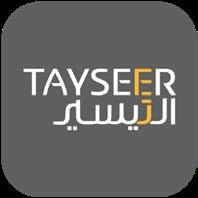


Financial discipline, explained the most simple manner, is to wisely decide how to spend, save and use money to make the most out of it. When you are disciplined in life, your character is marked by self-control. Similarly, when you are financially disciplined, you control your expenses based on necessities and your financial goals, which will ultimately give you greater control over your financial future.
It is incredibly important that financial discipline be established during student life. Developing financial discipline as a student is basically building strong habits. It lays the foundation for responsible money management habits which last for a lifetime.
Early development of financial discipline lays grounds for a financially secure future. Devel-

opment of such strong habits will help students avoid debt traps later in the future. It reduces the risk of falling into the trap of accumulating high interest debt such as credit card debts or loans. Financial discipline can be a key factor saving students from unnecessary debt and stress that comes with it.
It also plays an important role in funding education. Students with aspirations for higher education can save and plan for expenses such as tuition, books and living costs, reducing the need for excessive loans.
From daily necessities to entertainment, students have various expenses and financial discipline can certainly help manage such expenses. Managing expenses ensure that money is allocated for both needs and wants without overspending. Student
life is unpredictable and emergencies can happen anytime. Emergency preparedness allows them to set money aside for unexpected situations like medical expenses or sudden repairs, acting like a safety net during challenging times.
Financial discipline empowers students to build savings for both short term goals and long term goals, which leads to greater financial freedom in the future. Money related issues during student life can significantly contribute to stress and affect academic performances.

Practicing financial discipline reduces financial stress allowing students to focus better on their studies and overall well- being. Managing personal finance is a valuable life skill.
Financial discipline provides a safe space for students to make mistakes, learn from them, and grow into financially savvy adults. It also empowers students to become financially independent making them rely less on the parents for expenses while learning to manage their own expenses responsibly. Therefore, it is very important to develop financial discipline as a student in order to make informed and responsible choices with money.
It not only prevents immediate financial problems but also paves the way for a successful and secure financial future.
Poor finance management can have a range of negative consequences that will not only impact one’s current academic experience but also one’s long term financial health.
One of the biggest negative consequences can be debt accumulation. This can result from overspending on credit cards, taking loans without clear repayment plans or neglecting student loan obligations.
Greater debts take years to get cleared which limits financial flexibility in the future. Financial stress can take a toll on one’s mental health, resulting in mental health illnesses such as anxiety and depression.
These illnesses can negatively affect academic performance of students as well as their overall well-being. Poor financial management can detract students’ ability to focus on education due to financial stress and the need to work long hours to make ends meet.
This can result in lower grades, missed assignments, and reduced overall academic performance. Financial difficulties can force students to take additional part-time work, or reduce their course load to save money, which can extend the time needed to complete the degree and result in late graduation.
Late payment on bills, credit card debt, or defaulting on loans can damage one’s credit score. Poor credit scores can make it difficult to secure loans, rent an apartment, or even find employment in
some cases. Financial stress can also strain relationships with family and friends, and strain social life when one cannot participate in activities due to financial constraints. Poor financial management can extend beyond graduation and it may take years to establish healthy financial habits even after graduating. It is therefore essential to develop financial discipline as a student by practicing habits like creating a budget,avoiding unnecessary debts and seeking financial education and assistance when needed.
In simple terms, budgeting is like making plans for your money. It helps us decide how much should be spent on different things and how much should be saved. Imagine you have $100. Creating a budget helps you decide how much of it should be set aside for clothes, food, and recreational activities, while also setting aside some of it for savings. Budgeting allows you To make sure that you do not spend all your money and have some of it left for the future. A budget is a road map for finances so that you do not get lost or run out of money. It is a crucial component of financial discipline for students as it helps with effective money management, informed financial decision making, and achievement of financial goals. There are many ways how budgeting fits into financial discipline among students.
1. Income Management: Students have limited sources of income like allowances, part-time jobs or financial aids. Budgeting allows them to track and manage their income to ensure that their expenses are covered. It encourages them to be mindful of their income and spending.
2. Expense Tracking: Budgeting helps stu-
dents keep record of their expenses, both fixed (like rent and education ), and variable (like entertainment, transportation and dining out). When expenses are trapped students understand where the money is going and they can identify where their expenses need to be controlled.
3. Setting FInancial Goals: Budgeting encourages students to set financial goals, such as saving for tuition, paying off student loans, or building emergency funds. Having clear goals gives them a sense of purpose and direction in their financial lives.
4. Prioritizing Spending: When funds are limited, spending should be prioritized. With budgeting, allocating money for essential expenses can be done first and the rest can be allocated for discretionary spending. This prioritization ensures that they cover their basic needs before indulging in non-essential purchases.
5. Emergency Preparedness: A well structured budget typically includes an emergency fund category set aside for unexpected expenses like medical bills and car repairs. Emergency funds can be really helpful in reducing financial stress during unforeseen circumstances.
6. Building Savings: Budgeting helps students allocate a portion of their income toward savings and investments. Over time this can help them build wealth, achieve financial independence and plan for their future.
7. Financial Awareness: Regularly reviewing and adjusting budget keeps students informed about their financial situation. This awareness fosters responsible financial behavior and encourages them to make informed choices about
spending and saving.
8. Avoiding Impulse Purchases: A budget allows students to think twice before indulging in impulse purchases. When they can refer to a budget, they can consider whether their purchases are aligned with their financial goals.
9. Learning Financial Responsibility : Budgeting is a valuable life skill that students carry into adulthood. It teaches responsibility, discipline, and the importance of managing finances wisely. This helps us understand that budgeting is an essential aspect of financial discipline among students. It empowers them to make informed financial decisions, set and achieve goals, and avoid unnecessary debt. Strong budgeting skills leave a lasting positive impact on their financial well-being throughout their lives.
Saving money is a crucial aspect of financial dis-

cipline, especially for students. Savings can serve as emergency funds which will prevent them from relying on high-interest loans or credit cards, which can lead to debt.
Learning to save also encourages them to take responsibility for their finances. Setting specific saving goals and reaching them can be a motivating and empowering experience. When students have savings to fall back on, they are less likely to fall into debt traps to cover their daily expenses or emergencies, reducing their risks over financial stress. The earlier they start saving, the more they can benefit from compound interest.
Compound interest allows their money to grow over time, earning interest on both the initial amount and any interest already earned. This can significantly increase their wealth in the long run. Saving money requires students to learn about financial products such as savings accounts, Certificates of Deposits (CDs), and investment options.
These educational aspects give them a better understanding of the financial system, allowing them to make informed financial decisions. Savings are a great way to develop self-control and discipline.

By resisting the urge to spend impulsively, students can develop valuable skills in decision making and delayed gratification, which are essential for long term financial success.
When students are better equipped to handle unexpected financial challenges, it ultimately leads to their improved mental and emotional well-being. The accumulation of wealth gathered through savings open up opportunities for investments, retirement planning and achieving long-term financial dreams.
Saving money is a practical way to teach responsibility as well. students can learn the consequences of their financial decisions and the importance of planning for the future.
There are various options for savings accounts and investments for students to consider, each with its own features and benefits.The different types of savings accounts for students are:
1. Regular Savings Account: These accounts offer safe space to store money, and generally have low or no minimum balance requirements. They provide easy access to funds which makes them a suitable option for emergency savings.
2. High-Yield Savings Account: High-yield savings accounts offer a high interest rate compared to regular savings accounts. While the rates are relatively low, they can help students earn a bit more on their savings.
3. Student Savings Account: Some banks offer specialized savings accounts designed for students. Their specific benefits would be lower fees or requirements, making them a good choice for students.
4. Online Savings Account: Online banks often offer higher interest rates on savings accounts due to lower overhead costs. These accounts are accessible through online banking, making them convenient for tech-savvy students.
Some of the suitable.Investment options for students are:
1. Certificates of Deposit (CDs): CDs are time-bound investments that offer higher interest rates than regular savings accounts. Students can choose from various CD terms and the money is locked in for the specified period.
2. Stocks: Investing in stocks allows students to buy shares of publicly traded companies. While stocks carry higher risks, they also offer the potential for significantly long term returns. Students can start with low cost index funds or.individual stocks of companies they believe in.
3. Exchange-Traded Funds (ETFs): ETFs are similar to mutual funds, but trade like stocks on stock exchanges. They offer diversification and are a good option for students looking to invest in a basket of assets without buying individual stocks.
4. Mutual Funds: Mutual funds pool money from investors in a diversified portfolio of stocks, bonds and other assets. They are managed by professional fund managers and are relatively hands-off investment options.
5. Robo-Advisors: These are automated in-
vestment platforms that create and manage a diversified portfolio of investments based on an individual’s risk tolerance and financial goals. They are a user-friendly option for students who want professional management of their investments.
6. Peer-to-peer lending: Some online platforms allow individuals to lend money to others in exchange of interest payment. It can be an alternative investing, where students can earn returns by lending money to borrowers.
7. 401 (k) or IRA account: If students have earned income, They may consider contributing to a retirement account like a Roth IRA or 401 (k), if their employer offers one. These accounts offer tax advantages and.Can help students save for the long term.
8. Real-Estate Crowdfunding: These platforms allow students to participate in real estate projects with relatively small amounts of money. Students interested in real estate can invest without the high upfront costs of buying property.
9. Savings Bonds: US Savings bonds are low risk government securities that students can purchase to save money. They have fixed interest rates and can be a safe way to accumulate savings.
When deciding between various savings and investing choices, it’s crucial for students to take their financial objectives, risk tolerance, and investment timeframe into account. Before making investment decisions, it’s also wise to get guidance from a financial counselor or
do extensive study in order to make educated decisions that fit their unique needs and objectives.
Setting and maintaining savings goals is a crucial component of efficient money management, particularly for students. While setting saving goals, students should clearly identify what they are saving for by defining their specific goals. Defining them as savings for emergency funds, vacations, tuition fees or a new gadget will give them a clear sense of purpose. Their goals should be realistic and achievable within their financial means. Unrealistic goals can result in frustration and discourage students from saving. If there are multiple saving goals, the goals should be prioritized based on importance and urgency. Prioritizing goals are helpful in allocating resources more effectively. Students are also suggested to quantify their goals by adding a specific monetary value and timeline to their goals. When goals are large, they can be broken down into smaller, manageable milestones. This makes it less overwhelming and easier for the progress to be tracked.
In order to adhere to saving goals, students can start by creating a budget that clearly outlines their incomes and expenses. They can also automate savings by setting automatic transfers from their checking account to savings account on payday. This ensures that they save before having the chance to spend. Students should also keep the habit of tracking their spendings to identify areas where they can cut back. They can try various budgeting apps and tools to help with this. They can avoid impulse purchases by asking themselves if those non-essential purchases are aligned with their saving goals. Regularly reviewing savings progress can be motivating and help students stay on track. Students can adjust their plan if necessary, but
setbacks should not be used as an excuse to give up. It’s okay to treat yourself occasionally as a reward for meeting a savings milestone. However, they should be cautious not to overspend and undermine their progress. They may share their savings goals with a trusted friend or family member who can help keep them accountable and provide encouragement. As their income increases, they should resist the urge to increase their spending proportionally. Instead, they can allocate the extra income toward their savings goals. Students should continuously educate themselves about personal finance and investment opportunities. The more they understand about managing money, the more motivated and capable they will become to save and invest wisely. They can prioritize building an emergency fund as one of their initial savings goals. Having this safety net can prevent them from dipping into other savings for unexpected expenses. Saving goals can take time to achieve, and there may be unexpected setbacks. Students should be patient with themselves and willing to adjust their plans as needed.
An advice to students, remember that saving is a skill that takes practice, and setbacks are a normal part of the process. The key is to stay committed to your goals and continue learning about personal finance to improve your financial discipline over time.

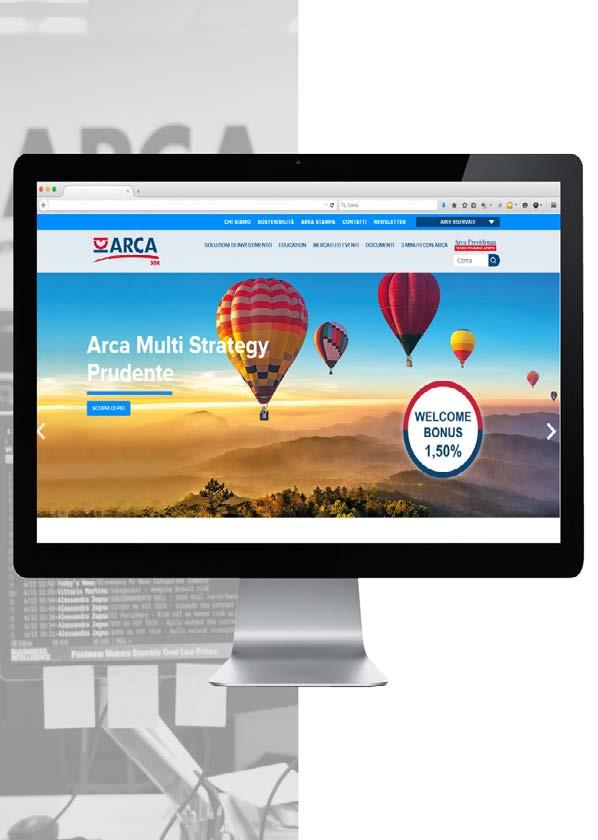


According to the Student Loan Company (SLC), as of 2023, there were over 225.85 billion British pounds worth of outstanding student loan debt in the United Kingdom. The majority of this debt, 205.57 billion pounds, was owed by England, while 7.56 billion pounds, 8.04 billion pounds, and 4.68 billion pounds were owed by Scotland, 7.56 billion pounds, and 8.04 billion pounds, respectively, by Wales and Northern Ireland. The act of efficiently managing and controlling one’s debts is referred to as debt management. To lessen debt loads and enhance overall financial wellbeing, it involves tactics like budgeting, prioritizing debt payback, communicating with creditors, and making prudent financial decisions. Avoiding excessive debt, lowering interest rates, preserving credit, and achieving financial stability are the objectives of debt management. Based on the statistics provided above, we can understand the importance of debt management skills among students. Debt management helps them avoid financial stress as it ensures that they do not accumulate unmanageable amounts of debt. Responsible management of debt allows students to manage their financial freedom and make financial decisions without being burdened by excessive debt obligations. It also helps students build and maintain a good credit score, which is crucial for financial endeavors. Debt management allows students to concentrate on their studies without being burdened by financial worries, leading to better career prospects. It teaches them valuable financial skills and habits that will serve them well throughout their lives, promoting financial discipline.
Responsible use of credit cards is another important element that should be covered under debt management. Responsible credit card usage is an effective way for students to start building a positive credit history. It is also a key component of financial literacy as it helps them understand the concept of borrowing money, interest rates and the consequences of financial decisions. Credit cards serve as emergency backups for students when they do not have sufficient savings. They also offer convenience for online purchases, travel

bookings, and more. They provide added security by reducing the need to carry large amounts of cash while traveling. Many credit cards offer reward programs, cashbacks, or travel benefits, and when students understand how these features can be used, they can make the best use out of these cards. Learning responsible card usage is useful to avoid high-interest debt and encourages them to make timely payments and manage their credit balances wisely.
Financial discipline can be fostered when students manage their spendings within their credit limits and make payments on time. Awareness regarding responsible card usage includes safeguarding personal information and monitoring accounts for potential fraud or identity theft, which helps students protect themselves from financial harm.
This explains how responsible credit card usage is an important element of financial education among students. It empowers them to use credit cards as a financial tool wisely, build creditworthiness, and make informed decisions that will benefit their financial well-being in the long run. Another crucial element that falls under debt management is management of student loans which is essential in or-
der to maintain financial stability and minimize the long-term effect of debts. In order to manage student loans, students can start by knowing the details of their loans, including the type, interest rates, terms, and repayment options. They can create a spreadsheet or use loan management tools to keep track of this information. Development of a realistic budget that includes all their income and expenses helps them to allocate a portion of their income specifically for loan payments. A budget also helps them stay organized and ensures that they are making timely payments. Students should choose the repayment plan. For example, the federal student loans offer various repayment plans, including Income-Driven Repayment (IDR) plans that base their payments on their income. Students can explore these options to find the one that fits their financial situation best. Setting up automatic payments for student loans ensures that they never miss a payment and may even qualify them for an interest rate reduction.
If they can afford it, making extra payments towards their loans can help them pay down the principal balance faster, reducing the overall interest they will have to pay. If they have multiple loans, they should
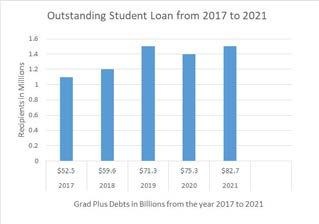
focus on paying off the ones with the highest interest rates first. This minimizes the overall cost of borrowing. Depending on their profession and specific circumstances, they may be eligible for loan forgiveness or repayment assistance programs. It is highly suggested that they research options such as Public Service Loan Forgiveness (PSLF) or Teacher Loan Forgiveness. Some employers offer student loan assistance as part of their benefits package, students may check with their employer to see if such benefits are available to them.
They may consider loan consolidation to simplify payments or loan refinancing to potentially secure a lower interest rate. However, they should be cautious with private loan refinancing, as it may result in the loss of federal loan benefits.

They should have an emergency fund in place to cover unexpected expenses, so they do not need to rely on credit cards or additional loans in case of financial setbacks. If students are struggling with their student loan payments, they should not hesitate to reach out to their loan servicer for assistance as they can provide guidance on alternative repayment plans or deferment/forbearance options. Students should always stay updated on changes to student loan policies and programs. Legislation and regulations related to student loans can change, affecting their repayment options and eligibility for forgiveness. Lastly, students should keep open lines of communication with their loan servicer. They should notify their loan servicers promptly if their contact information changes or if they encounter financial difficulties that may affect their ability to make payments.
Students can successfully repay their loans while preserving their financial security and pursuing their financial objectives with careful planning and the correct tactics. Managing student loans demands dedication.
Making informed decisions with your money when you spend it is referred to as smart spending. It entails carefully evaluating whether or not what you’re purchasing is a wise use of your resources. Spending wisely enables you to maximize the use of your funds while avoiding unnecessary or impulsive expenditures.

It’s similar to making sure your money is going toward things that are actually important to you and will help you in the long term. Students who practice smart spending are better equipped to navigate the economic landscape.
Teaching students to spend wisely involves not just teaching them how to manage their money in the here and now, but also preparing them for a safe and wealthy future. These abilities can improve a person’s general quality of life and are crucial for personal financial security.
Students can practice smart spending by adopting comparison shopping. It is the process of evaluating and comparing different products or services to find out which one offers the best value in terms of price, quality, features and other factors. This helps students ensure that they get the most value for their money by selecting products or services that best meet their needs and preferences by staying within their budget.
Comparison shopping is made up of numerous key aspects, one of them being price comparison. This involves comparing the prices of similar products or services from different retailers to find the most affordable option. Quality assessment is done by evaluating the quality and performance of the product or service to know if they meet the.desired standards or expectations.
Feature comparison can be done by examining the features, specifications and capabilities of products to identify which one best suits the intended purpose.
Students can consider brands and reputation by reading reviews and checking ratings from other consumers.
Checking additional costs is another key aspect which refers to extra costs such as taxes, shipping fees, or maintenance costs, associated with the purchase. Lastly, value for money should be assessed by considering the overall value offered by the product or service in return for its price.
Online research, actual store visits, reading reviews, asking for recommendations, and using price comparison websites or apps are just a few ways to conduct comparison shopping. It enables students to make wise choices and guarantees that the purchases they make are in line with their requirements and financial constraints.
There are various strategies for students to practice comparison shopping. Before making a purchase, students should research products online or instore to gather information on features, prices, and reviews. They can determine a budget for the item they intend to buy so they can avoid overspending. They may check prices from multiple retailers, both online and offline, to find the best deal.
They are further suggested to evaluate the value of the product by considering its quality, features, and durability in relation to its price. They should search for coupons, discounts, or cashback offers that can reduce the cost of the item and understand the return and warranty policies of the retailer in case they need to make a return or exchange.
Students should compare different brands to see if there are similar products that meet their needs at a lower cost. They should also read product reviews and user feedback to gain insights into the product’s performance and customer satisfaction. By practicing these strategies, students can become more effective at comparison shopping, saving money, and making informed purchasing decisions.

For students looking to become financially independent while pursuing their education, part-time work has many advantages.

These possibilities may be crucial in assisting students with funding their expenses and developing skills that go beyond the classroom.
In the first place, part-time jobs give students a source of cash, which can be crucial for paying for school expenditures including tuition, books, rent, and everyday living costs.
This monetary aid can lessen the burden of student debt and the requirement for parental or guardian support, enabling students to manage their finances and feel more independent. Additionally, part-time work encourages accountability and time management skills.
Students must strike a balance between their employment and academic responsibilities, which
teaches them important time management and organizing skills that they may use in many different facets of their lives.
Students learn to meet deadlines and complete tasks linked to their jobs while retaining their academic performance, which fosters a strong work ethic. Students can explore potential career options or obtain real-world experience in their chosen fields by working part-time.
A student’s résumé can be improved by internships and part-time jobs linked to their major, giving them an advantage in the job market after graduation. Students can build crucial soft skills like communication, cooperation, and problem-solving even in employment outside of their profession, all of which are highly desired by employers.
Part-time employment can also help people develop personally and gain confidence. Students who work a part-time job frequently gain more freedom
and self-worth as they learn how to function in the working world. They may have a better awareness of their talents and shortcomings as a result of these encounters, empowering them to choose their professional routes wisely.
In conclusion, working a part-time job gives students a variety of advantages, such as financial independence, better time management, real-world experience, and personal development. Students can invest in both their academic and professional growth by working part-time while continuing their education, positioning themselves for a prosperous and independent future.
Students may find it difficult to juggle part-time work and school, but with the right tactics, they may successfully handle both obligations. One of the most effective strategies to create a balance between part time jobs and academics, is efficient time management. Students can create schedules that.allocate specific time slots for classes, work shift and personal life. They can also utilize tools like calendar and time management apps to organize deadlines for tasks effectively.
It is essential that they prioritize their academic responsibility over part time jobs, so their work hours should fit around class schedules while ensuring they meet their academic commitments first.

They can look for part time jobs with flexible work hours. The proactive approach of maintaining open and honest communication with employers about academic commitments and potential schedule conflicts can help employers accommodate their needs. Students can utilize breaks and downtime during work shifts to study or complete assignments. Overcommitting to work can lead to burnout and negatively impact students’ grades. Thus, they should be realistic about setting their work hours so they can work and maintain their academic performance at the same time. In or-
der to study, smart students can focus on efficient and effective study techniques. They can do this by identifying their peak productive times and use them for studying.They can also utilize study groups and online resources to make the most out of their study session sessions. Students are also suggested to plan their academic assignments and work schedules in advance, as it allows them to anticipate busy hours and make necessary adjustments to their work hours.
Discipline, planning, and organization are necessary to manage part-time employment and academic obligations. Students can develop a harmonious balance that enables them to succeed in both their employment and their education by putting these techniques into practice.
Goal setting can be a powerful tool to motivate students to lead a financially disciplined life. Goal setting can be a powerful tool for promoting disciplined financial behavior among students. Setting specific financial goals helps students clarify what they want to achieve with their money.

Whether it’s paying off student loans, saving for a trip, or building an emergency fund, having clear goals provides direction and focus.
Goals provide motivation. When students have a clear picture of what they are working toward, they are more likely to stay committed to their financial plans and make better choices to reach those goals. Financial goals require planning.
Students need to create a budget to allocate their income and expenses in a way that aligns with
their goals. This budgeting process encourages discipline by making them mindful of their spending and savings habits. Goals help students prioritize their spending. When faced with various spending options, having established goals allows students to make informed choices and allocate their resources to what matters most to them.
Setting measurable goals allows students to track their progress. Regularly monitoring their financial situation and progress toward their goals helps them stay on track and make adjustments as needed. Some financial goals, like building an emergency fund, provide a safety net for unexpected expenses. This can reduce the need to rely on high-interest credit cards or loans during emergencies, promoting financial stability.
For students with student loans or other debts, setting a goal to pay off debt can be empowering. It encourages consistent payments and possibly
even extra payments, which can lead to faster debt reduction. Financial goal setting fosters a long-term perspective on money management. It encourages students to think about their financial well-being beyond their current circumstances, which can lead to more sustainable financial habits.
Pursuing financial goals often requires learning about financial concepts and strategies. This education can enhance their financial literacy, making them more informed and responsible with their money.
Achieving financial goals can bring a sense of accomplishment and satisfaction. This positive reinforcement can encourage students to continue setting and pursuing new financial goals.
To make goal setting effective for disciplined financial behavior, students should follow the SMART criteria for setting goals: Specific, Measurable, Achievable, Relevant, and Time-bound.
Additionally, regularly reviewing and adjusting goals as circumstances change is essential to maintaining financial discipline.

Educational institutions, financial literacy programs, and advisors can play a role in helping students set and achieve their financial goals by providing guidance, resources, and support.
According to the US Department of Education, the student loan debt in the United States was estimated to be over $1.7 trillion.
Berthold Auerbach once said, “To acquire money requires valor, to keep money requires prudence, and
to spend money well is an art.” In conclusion, financial discipline among students is a paramount skill that not only paves the way for a stable present but also a prosperous future. Throughout this article, we’ve delved into the essential pillars of financial discipline, from meticulous budgeting to diligent savings and responsible debt management. These principles empower students to take control of their financial destinies, setting them on a path toward financial security and independence.
As students apply these strategies and cultivate the discipline to stick with them, they not only mitigate the stress of financial uncertainty during their academic years but also lay the groundwork for a lifetime of sound financial decision-making. In doing so, they equip themselves with the tools to achieve their dreams and aspirations, ensuring that their educational journey is not just one of academic growth but also financial empowerment. Ultimately, financial discipline isn’t just about making the numbers add up; it’s about empowering students to shape their own financial narratives and seize control of their futures.
BERTHOLD AUERBACH ONCE SAID, “TO ACQUIRE MONEY REQUIRES VALOR, TO KEEP MONEY REQUIRES PRUDENCE, AND TO SPEND MONEY WELL IS AN ART.”



The history of digital banking is a fascinating journey that spans several decades, marked by technological advancements and changing consumer behaviors.
The roots of digital banking can be traced back to the 1950s when banks first started using computers for back-end operations such as transaction processing and record-keeping. In the 1960s and 1970s, the concept of Automated Teller Machines (ATMs) emerged, allowing customers to perform basic transactions like withdrawing cash and checking balances electronically. The 1980s saw the birth of online banking, with the advent of personal computers. Banks began offering rudimentary online services that allowed customers to check account balances and transfer funds between accounts.
Security concerns were a major hurdle during this period, and early online banking systems faced several challenges in ensuring the safety of customer data. The 1990s marked a significant turning point as the World Wide Web became widely accessible leading to the internet revolution.
This led to the rapid expansion of online banking services. In 1994, Stanford Federal Credit Union in the United States became one of the first financial institutions to offer online banking to its members. Online banking platforms improved in terms of security and functionality, allowing customers to perform a broader range of transactions from their computers.
With the proliferation of mobile phones, banks began developing mobile banking applications in

the late 1990s and early 2000s. SMS-based banking was among the earliest forms of mobile banking, allowing customers to receive account alerts and make basic inquiries via text messages. Mobile banking apps, initially basic, evolved to provide features such as bill payments, fund transfers, and mobile check deposits.
The clash between digital banking and mobile banking is not so much a battle as it is a reflection of the evolving landscape of banking services in response to changing consumer needs and technological advancements. While these terms are often used interchangeably, they represent distinct but interconnected aspects of modern banking.
The 2010s witnessed the rise of fintech startups challenging traditional banks with innovative digital banking solutions. Peer-to-peer (P2P) payment apps like Venmo and Square Cash gained popularity, simplifying person-to-person payments. Mobile wallets, such as Apple Pay and Google Wallet, offered convenient ways to make digital payments using smartphones.
Neobanks (digital-only banks) like Chime and Revolut emerged, offering fee-free banking and user-friendly mobile apps. The 2020s saw further advances in digital banking, with a focus on enhancing customer experience through AI-powered chatbots, personalized financial advice, and seamless integration with other financial services. Cryptocurrencies and blockchain technology gained mainstream attention, influencing the development of digital assets and decentralized finance (DeFi).

The COVID-19 pandemic accelerated the adoption of digital banking services, as people sought contactless and remote banking options.
The history of digital banking reflects the ongoing transformation of the financial industry driven by technology and changing consumer preferences. As technology continues to evolve, digital banking will likely become even more integral to our daily lives, with innovations such as biometric authentication and artificial intelligence shaping the future of banking services.
Digital banking is a broader term that encompasses a wide range of electronic and online financial services. It includes not only mobile banking but also internet banking accessed through desktop or laptop computers. Digital banking services can be delivered through various channels, including web browsers, mobile apps, and even wearable devices. Some key features of digital banking include:
1. Multi-Channel Access: Digital banking allows customers to access their accounts and perform transactions through a variety of devices, including computers, tablets, smartphones, and even smartwatches.
2. Comprehensive Services: Digital banking typically offers a comprehensive suite of banking services, including account management, bill payments, fund transfers, investment services, and more.
3. Customer Experience: Banks focus on creating seamless and user-friendly interfaces to enhance the overall customer experience when using digital banking platforms.
4. Security : Security measures, such as encryption and multi-factor authentication, are integral to digital banking to protect customer data and transactions.
Mobile Banking: Mobile banking is a subset of digital banking that specifically refers to banking services accessed through mobile devices like smartphones and tablets. Mobile banking has gained promi-
nence due to the widespread adoption of smartphones and the convenience they offer. Key characteristics of mobile banking include:
1. Portability and Convenience: Mobile banking allows customers to manage their finances on the go, making it convenient for tasks like checking balances, making quick payments, and monitoring transactions.
2. Mobile-Optimized Apps: Banks often provide mobile apps optimized for small screens and touch interfaces, enhancing the user experience on mobile devices.
3. Mobile Wallets: Mobile banking frequently includes features like mobile wallet functionality, which enables contactless payments using Near Field Communication (NFC) technology.

Rather than a clash, digital banking and mobile banking complement each other in meeting customers’ banking needs. A customer’s digital banking experience may involve accessing their accounts through a mobile app when using a smartphone, but they might switch to a web browser on a laptop or tablet for more complex financial transactions or detailed account analysis.
The choice between digital banking channels often depends on user preferences and the complexity of the banking task at hand. For simple, day-today activities like checking balances or transferring money between accounts, mobile banking is highly convenient. However, for tasks that require more screen real estate or extensive data analysis, users may prefer the web-based digital banking platform on a larger device.
In essence, the relationship between digital banking and mobile banking is one of synergy. Both are integral parts of the broader digital transformation in the banking industry, aimed at providing customers with greater flexibility, convenience, and accessibility in managing their financial affairs. As technology continues to advance, the lines between digital and mobile banking will likely blur further, as banks strive to create seamless, consistent, and secure experiences across all digital channels.
Big tech companies entering the digital banking space can indeed pose both opportunities and challenges to traditional bank-developed digital banking platforms. Let’s explore the dynamics at play:
Big tech companies often have vast user bases through their existing products and services (e.g., Amazon, Google, Apple, Facebook). They can leverage this user base to quickly onboard customers into their digital banking platforms. Big tech firms are known for their prowess in cutting-edge technology, including artificial intelligence, data analytics, and cloud computing. This enables them to develop sophisticated and user-friendly banking solutions. They are customer-focused and data-driven, allowing them to tailor banking services to meet customer needs more effectively. They can analyze user data to provide personalized financial products and recommendations.These companies often offer a wide range of services beyond banking, such as e-commerce, entertainment, and communication. They can seamlessly integrate financial services into their existing ecosystems, creating a more comprehensive user experience.
1. Regulatory Hurdles: Entering the banking industry involves navigating complex regulatory frameworks, which big tech companies may find challenging. Traditional banks have experience and established relationships with regulators.
2. Trust and Security : Banks have a long history of providing secure financial services, which can be a trust advantage. Big tech firms may need to overcome skepticism regarding their handling of financial data.
3. Legacy Systems: Banks often have legacy IT systems, which can be challenging to update and modernize. Big tech companies can build digital banking platforms from the ground up, avoiding some of these legacy constraints.
Rather than an outright threat, the relationship between big tech and traditional banks in the digital banking space is increasingly one of coexistence and collaboration. Many banks are partnering with big tech firms to enhance their digital banking offerings. For example:
- Banks may collaborate with big tech companies to improve cybersecurity and data protection measures.
- Traditional banks might integrate with big tech payment platforms (e.g., Apple Pay or Google Pay) to offer customers convenient mobile payment options.

- Banks can also use big tech services for data analytics and customer insights to enhance their digital banking offerings.

Conclusion:
The entry of big tech into digital banking does introduce competition, but it also opens up opportunities for banks to evolve and innovate. The landscape is evolving, and the success of both big tech and traditional banks in the digital banking space will depend on their ability to adapt, collaborate, and meet the evolving needs and expectations of customers in an increasingly digital world.



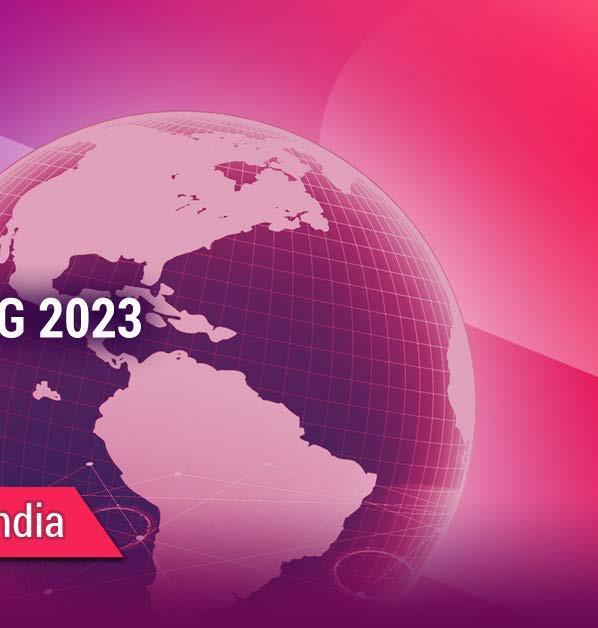

FOR THE MOST DESIRABLE WORKPLACE ENVIRONMENT THAILAND 2023









































































Explaining data analytics to investors is essential for conveying the value and potential impact of data-driven strategies on a company’s financial performance. Data analytics is the process of systematically examining large sets of data to uncover valuable insights, trends, and patterns that can inform strategic decision-making within a business. Data analytics plays a pivotal role in finance due to its profound importance in informed decision-making, risk management, and strategic planning. In the financial sector, where data is abundant and market dynamics are intricate, data analytics enables institutions to harness the power of historical and real-time data to identify patterns, trends, and insights. These insights inform investment strategies, asset allocation, and portfolio management, helping investors make well-informed decisions and optimize returns. Additionally, data analytics aids in risk assessment and fraud detection,
ensuring the security of financial transactions and regulatory compliance. By providing a comprehensive view of financial markets, customer behaviors, and economic indicators, data analytics empowers financial institutions to adapt to changing market conditions, enhance customer experiences, and maintain a competitive edge in a fast-paced industry.
Key Points for Investors:
1. Improved Decision-Making: Data analytics empowers businesses to make more informed and strategic decisions. By analyzing historical and real-time data, companies can identify opportunities, mitigate risks, and optimize their operations.
2. Competitive Advantage: In today’s data-driven world, companies that harness the power of data analytics gain a significant competitive advan-
tage. It allows them to stay agile, respond to market changes, and meet customer needs more effectively than their competitors.
3. Cost Efficiency: Data analytics can lead to cost savings. By identifying inefficiencies, streamlining processes, and optimizing resource allocation, businesses can reduce expenses and improve profitability.
4. Revenue Growth: Data analytics can also drive revenue growth. It helps identify new market segments, customer preferences, and product opportunities, leading to increased sales and market expansion.
5. Risk Mitigation: Investors are often concerned about risks. Data analytics can help businesses identify and mitigate potential risks, such as fraud detection, compliance issues, and market fluctuations, thereby protecting the company’s bottom line.
6. Customer Insights: Understanding customers’ behavior and preferences is crucial. Data analytics can provide deep insights into customer demographics, buying habits, and satisfaction levels, which can inform marketing and customer retention strategies.
7. Adaptability: The business landscape is constantly evolving. Data analytics enables companies to adapt to changing market conditions and customer expectations rapidly. It supports agile decision-making in response to emerging trends.
8. Long-Term Sustainability: Investing in data analytics is not just about short-term gains; it’s about building a foundation for long-term sustainability. Companies that can leverage data effectively are better positioned to thrive in the digital age.
9. Measurable Results: Investors like to see results. When discussing data analytics, provide concrete examples of how it has positively impacted other com-
panies or how your company has already benefited from data-driven insights.

10. Investment in Technology: Mention any investments your company has made in data analytics tools, platforms, or talent. Demonstrating a commitment to this area shows investors that you’re positioning the company for future success.
Investors can leverage data analytics to gain a competitive edge by making more informed and timely investment decisions. By analyzing a vast array of financial data, market trends, and economic indicators, investors can identify opportunities and risks that might not be apparent through traditional analysis alone. Data analytics allows investors to assess the performance of individual assets, sectors, or markets, enabling them to allocate their resources strategically. Moreover, machine learning algorithms and predictive models can help investors forecast market movements and identify potential outliers or anomalies. This data-driven approach enhances portfolio management, risk mitigation, and ulti-
mately leads to more profitable and resilient investment strategies in an increasingly complex and dynamic financial landscape. In summary, data analytics is a powerful tool that can enhance decision-making, drive efficiencies, and boost competitiveness within a company. For investors, it represents a strategic investment that can lead to improved financial performance, reduced risks, and a stronger market position.
Financial services firms are increasingly using data analytics to gain a competitive edge in the market. Here are some examples of how they leverage data analytics:
1. Credit Scoring and Risk Assessment: Banks and lending institutions use data analytics to assess the creditworthiness of borrowers. By analyzing historical financial data, transaction records, and even non-traditional data like social media behavior, they can more accurately predict the risk associated with lending money. This allows them to make informed decisions about whether to approve loans and at what interest rates.
2. Algorithmic Trading: Investment firms use data analytics and machine learning algorithms to make high-frequency trading decisions. These algorithms analyze vast amounts of market data in real-time to identify trading opportunities and execute trades at optimal prices. This gives them a significant advantage in terms of speed and accuracy over human traders.
3. Customer Segmentation: Banks and insurance companies use data analytics to segment their customer base. By analyzing customer data, including demographics, transaction history, and online behavior, they can tailor their marketing and product offerings to specific customer segments. This personalization improves customer
retention and acquisition.
4. Fraud Detection: Financial institutions employ sophisticated fraud detection systems that use data analytics to spot unusual patterns and transactions indicative of fraud. These systems can quickly identify and flag potentially fraudulent activities, helping to protect both the institution and its customers from financial losses.
5. Asset Management: Asset management firms use data analytics to make informed investment decisions. They analyze economic indicators, market sentiment, historical performance data, and news feeds to assess the potential risks and returns of various investment options. This data-driven approach enables them to optimize their investment portfolios.
6. Compliance and Regulatory Reporting: Financial institutions must adhere to strict regulatory requirements. Data analytics helps them ensure compliance by monitoring transactions, detecting suspicious activities, and generating accurate reports for regulatory authorities. Automation through analytics also reduces the risk of errors and penalties.
7. Customer Experience Enhancement: Banks and insurance companies use data analytics to improve the customer experience. By analyzing customer feedback, online interactions, and transaction data, they can identify pain points and areas for improvement. This information can lead to better website design, streamlined processes, and improved customer service.
8. Cross-Selling and Upselling: Financial institutions analyze customer data to identify opportunities for cross-selling and upselling additional products and services. For example, if a customer
has a savings account, the bank may use data analytics to recommend a credit card or a mortgage based on the customer’s financial behavior and needs.
9. Predictive Maintenance: In the case of insurance companies that cover assets like cars or homes, data analytics can be used for predictive maintenance. By analyzing data from sensors and historical maintenance records, insurers can predict when policyholders are likely to need repairs or replacements, reducing claims costs.
10. Market Research and Competitive Analysis: Financial firms use data analytics to gather insights into market trends and competitors. They can analyze publicly available data, news, and social media sentiment to make informed decisions about market entry, product development, and investment strategies.

In today’s data-rich environment, financial services companies that harness the power of data analytics can make more informed decisions, reduce risks, improve customer experiences, and ultimately gain a competitive advantage in the market.
Data analytics plays a crucial role in enhancing customer service by providing valuable insights and personalized experiences. By analyzing customer data, businesses can better understand customer preferences, behaviors, and pain points. This knowledge enables them to tailor their services and offerings to meet individual needs, leading to improved customer satisfaction and loyalty. Moreover, data analytics empowers customer service teams with real-time information, allowing them to respond more efficiently to inquiries and resolve issues proactively. In essence, the synergy between data analytics and customer service creates a virtuous cycle of continuous improvement, ultimately fostering stronger and more lasting cus-
tomer relationships.
The future of data analytics in financial services is poised for remarkable growth and transformation. As technology continues to advance, financial institutions will increasingly rely on data analytics to drive innovation and maintain competitiveness. AI and machine learning algorithms will become even more sophisticated, enabling institutions to make faster and more accurate predictions for risk assessment, fraud detection, and investment decisions. Furthermore, the integration of big data from various sources, including IoT devices and social media, will provide a deeper understanding of customer behavior, allowing for highly personalized financial services and improved customer experiences. Data privacy and security will also play a crucial role, as regulations like GDPR and increased consumer awareness demand responsible handling of sensitive financial data. Ultimately, data analytics will empower financial services to optimize operations, create new products and services, and adapt to evolving market dynamics, ushering in an era of more efficient, customer-centric, and secure financial solutions.






















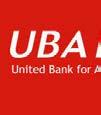



GHANA LTD
Ghana 2023
Services - Ghana 2023
Institution - Ghana 2023
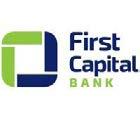
Top Foreign Exchange Company - Botswana 2023
Excellence in Business Banking - Botswana 2023
BOTSWANA
year - Latam 2023
UNIDO
PAYOMATIX TECHNOLOGIES PVT LTD

Best Digital Payments CFO of the year - India 2023 (Anurag Pratap Singh)

Brand - Egypt 2023
Provider - Egypt 2023
Bank - Egypt 2023
Bank - Egypt 2023
Best CFD Trading App - Australia 2023

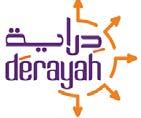





Education - Egypt 2023
comparing banking services and Egypt 2023
PU PRIME

Most Transformational Partnership of the Year - MENA 2023
service advisor Global 2023 ICM.COM

EGYPT GLOBAL VT MARKETS



Most Innovative Stock Broker MENA 2023
MENA
107
MAUBANK
Fastest Growing bank in Mauritius 2023
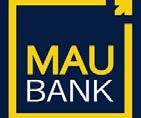
MAURITIUS
MUDREX

Most innovative crypto investing
Most Innovative Mobile Wallet - Europe 2023
Fastest Growing One stop Payment service provider - Europe 2023
Most Innovative financial service provider - Europe 2023
Most Innovative digital Pre-paid card - Europe 2023
Fastest Growing online and offline vider - NIGERIA


EUROPE NIGERIA

Best FX Educational Broker - Africa 2023
Best Forex Broker - Africa 2023

Best Trading and investment
Most sustainable investment
Fastest growing multi
ITALY AFRICA
MUDREX
investing platform - Italy 2023
ITALY
MUDREX


Most trusted crypto investing platform - India 2023
INDIA
offline payments solution proNIGERIA 2023
NIGERIA
investment solution provider UK investment company UK 2023
asset broker UK 2023
Sustainability Recognition Award in ESG Effort - Singapore 2023

SINGAPORE
SHANGHAI PUDONG DEVELOPMENT BANK ICM.COM

Top Retail and Institutional Broker - MENA 2023
Most Innovative Stock Broker MENA 2023







Blockchain-Based Trade Finance Service ProvidAPAC 2023

Finance Service Provider APAC 2023
lending platform Asia Pacific 2023
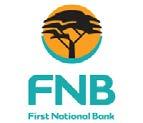
Best Banking CEO of the year(BYDON LONGWE) Zambia 2023
Best Banking app of the year Zambia 2023
Best SME Bank Zambia 2023
ZAMBIA

the year OMAN 2023
solution (Paysticker) OMAN 2023
OMAN
BANK OF CEYLON PLC
SRI LANKA 2023
SRI LANKA 2023
SRI LANKA 2023
Bank SRI LANKA 2023
PACIFIC LANKA

Fastest Growing Forex Broker - LATAM 2023


Best Islamic Bank SRI LANKA 2023
Best Online Banking Platform SRI LANKA 2023
SRI LANKA






ZIMBABWE 2023 (Courage Mashavave)
Bank of the Year ZIMBABWE 2023
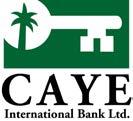




Bank - Zimbabwe 2023








Investment Strategies - Saudi Arabia 2023
ARABIA

Education Provider - Dubai 2023 Institution - Dubai 2023
DUBAI
- Middle East 2023
Trade Promotion Company - Middle 2023
BAHRAIN

Most Sustainable Fintech Solutions - UAE 2023
Most Innovative Contactless Payments - UAE 2023
Best Fintech Solutions - UAE 2023

Top Market Data Provider - Saudi Arabia 2023


Best Digital Travel Insurance Platform - Australia 2023
Best Insuretech of the Year - Australia 2023
Best CEO in Travel Insurance Sector - Australia 2023 (Dean Van Es)






TAKAFUL
Lanka 2023 - (GOLD FUND)
Insurance Sri Lanka 2023

TELAVOX

Best unified Communication as a service provider in Sweden 2023

SWEDEN
TRUKKIN

the year Philippines 2023
PHILIPPINES
Most Innovative Freight Solutions UK 2023
UAE
of the Year Europe 2023
LANKA EUROPE
Best telecommunication CEO of the year - Europe 2023







the year - Indonesia 2023
INDONESIA
KACIFIC BROADBAND SATELLITES GROUP
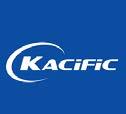

Best Satellite Internet Company of the year - Philippines 2023
Fastest Growing Satellite Internet Company of the year - Philippines 2023
PHILIPPINES
GROUP CO LTD
Automobile company Thailand 2023
THAILAND
BROADBAND REGTECH AFRICA

Media Platform AFRICA 2023
AFRICA
Best Private Jet Charter Service GCC 2023


Most sustainable Green energy Company Cambodia 2023
GCC CAMBODIA
















Company - Sri Lanka 2023
THE SOCIAL LOAN COMPANY ( TSLC)

AI & Machine Learning Initiative of the Year - UAE 2023
Team Coach - Global 2023
GLOBAL
the Year Sri Lanka 2023
Brand Sri Lanka 2023
Brand Sri Lanka 2023
LANKA LANKA
UBLAC

Most Innovative Digital Agency - Jordan 2023
UAE JORDAN

As we conclude this issue, we’d like to express our heartfelt gratitude to our readers, contributors, and partners for your unwavering support. The world of business is ever-evolving, and your commitment to staying informed and engaged is what keeps us inspired.
In our next issue, we’ll delve deeper into the latest trends reshaping industries, highlight visionary leaders who are driving innovation, and share expert insights to help you navigate the dynamic landscape of business, technology, finance, banking and much more. Get ready for thought-provoking articles, exclusive interviews, and invaluable strategies to propel your success.
Stay tuned for our upcoming edition, where we continue to explore the world’s industries and the boundless possibilities involved in them. Until then, keep thriving, keep leading, and keep reading.
Sneak Peek into the Next Issue:
“Financial Literacy Among Women”: Uncover their status of financial literacy and the initiatives being taken to support them in business and career development..
“Green living”: Discussions for eco-friendly office spaces, including energy-efficient lighting, green building materials, and indoor air quality improvements.
“Responsible Lending in the Age of Big Data”: Exploring ethical considerations surrounding the use of customer data and AI algorithms in lending decisions.
Thank you for allowing us to be a part of your world. It has been an honor and a privilege.
Don’t miss out on these exciting insights and more. See you in the next issue of GI Global Magazine!
Suraksha Subba

Editor-in-Chief
Gazet International Global Magazine

